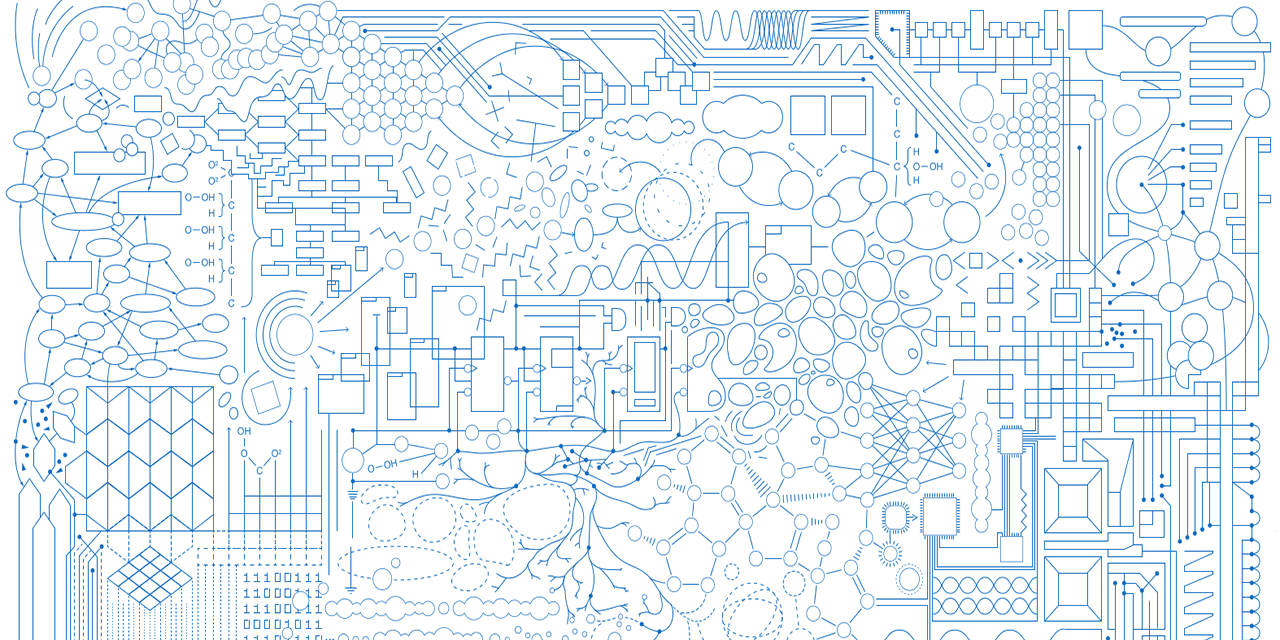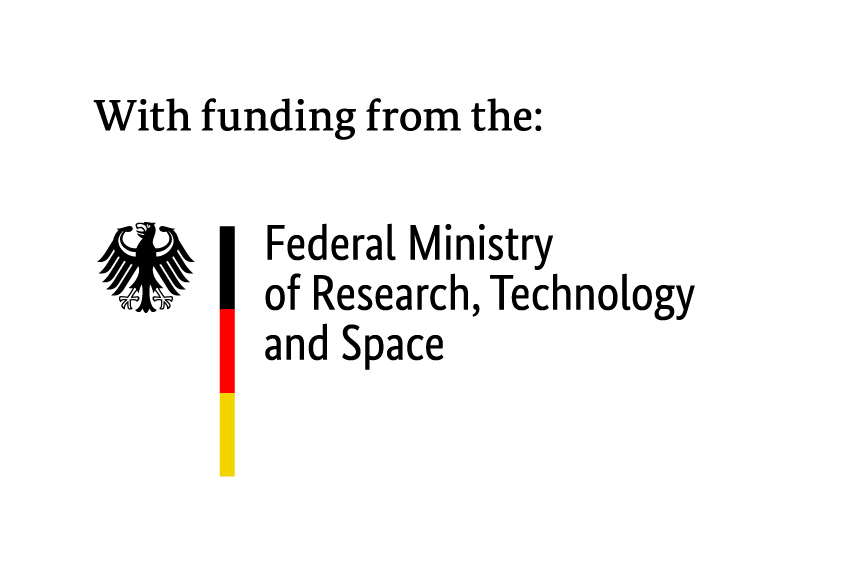Science between Disinformation, Political Influence and Restrictions on Academic Freedom

JANA HAMBITZER
In a time of geopolitical tension and social division, streams of disinformation, and political interference in science, academic freedom is increasingly under threat, even in places known for their free and thriving academic landscape. With its focus topic Europe in Times of Divisions, this year’s Freedom of Research: A European Summit provided a space for joint reflection and discussion on how Europe and its scientific community can protect themselves against these threats.
Jointly organized by the International Charlemagne Prize of Aachen, the Knowledge Hub and the Käte Hamburger Kolleg c:o/re of RWTH Aachen University, the Summit’s two-day program included a festive evening reception at the Aachen Town Hall’s Coronation Hall, a symposium, and the Stand-up FoR Science Night in a local cinema. The symposium, which took place on November 6 at RWTH Aachen University’s SuperC, brought together scholars, politicians, and business representatives to promote dialogue and explore ways to build bridges, uphold shared values, and foster scientific exchange in times of division.
Bridging knowledge and power
The keynote speech was held by Prof. Dr. Maria Leptin, President of the European Research Council, who emphasized the importance of exchange and dialogue to protect the freedom of research, a task that requires tolerating and even fostering dissent. In her analysis, she pointed out that universities, in particular, are under attack because they are places where people question prevailing conventions, ask uncomfortable questions, and embrace curiosity. Yet science best serves the state and society precisely when it’s free from ideological content and constraints. Science is not a service, its value lies in its slow, exploratory quality. Professor Leptin criticized some trends in funding and evaluation programs that are linked to an understanding of science as a utility: “Pizza gets delivered, not research results.”

The follow-up panel further developed the question of how funding can be used as a tool of political power, with contributions by Dr. Toon van Overbeke, Charlemagne Prize Fellow 2024/25, Caroline de Gruyter, European Affairs Correspondent and Columnist, Prof. Dr. Maria Leptin, and Erica Lutes, Head of Fulbright Commission Brussels. They advocated stable, performance-independent institutional funding and emphasized that the freedom to take intellectual risks, embrace failure, and build public trust is essential for science as a public good – in Europe and beyond.

The symposium then featured two TED-style talks: Dr. Dr. René von Schomberg, shed light on a different kind of threat to the freedom of research: the digital transformation of the academic publishing system. In this system, data analytics shape the credibility and focus of research, and bibliometric indices have become an autonomous currency determining the value of research. He raised the question of whether researchers in this system are truly free and independent and noted how competition results in the loss of mutual responsiveness and collaboration within the scientific community, thereby also damaging the freedom of research. Publishers reduce wisdom to the strategic use of knowledge, making research results irrelevant, as long as bibliometric data can be used as main criterion for ranking the “most important” publications. The second talk also addressed the issue of communication within and outside the academic community: Prof. Dr. Sahana Udupa, Professor of Media Anthropology at LMU Munich, explored how fun and humor on social media could be reframed from exclusionary extreme speech to foster new ways of connecting. She pointed out how reclaiming humor and dignity in online spaces is a powerful way to combat platforms that encourage hate speech and online trolling.


Bridging interests and ideals
How dependent is Europe on foreign infrastructure? This question was examined in a conversation between Dr. Oliver Grün, Founder and CEO of the GRÜN Software Group and President of the European Digital SME Alliance, Prof. Dr. Dr. Thomas Lippert, Director of Jülich Supercomputing Centre, and Rebekka Weiß LL.M, Head of Regulatory Policy and Senior Manager Government at Microsoft Berlin. They discussed whether EU regulations strengthen Europe’s leadership or limit innovation, as well as how to strike a balance between responsibility, sovereignty, and competitiveness. One of the key takeaways was that Europe must develop its own model of technology based on trust and democratic values. Additionally, it was emphasized that digital sovereignty is crucial for Europe to prepare for the future and be capable of shaping the global technological order.

Technological innovation is particularly important for helping face the challenges of climate change. The European Union’s goal of creating 100 climate-neutral and smart cities by 2030 aims at driving a sustainable, inclusive, and resilient urban future, but it is very ambitious. The panel discussed the challenges of this project building upon the expertise of Dr. Ali Abdelshafy, Charlemagne Prize Fellow 2024/25, Patrick Child, Deputy Director-General of DG Environment at the European Commission, and EU Mission Manager for Climate-Neutral and Smart Cities, Prof. Dr. Cornelia Redeker, Professor in Architecture and Head of Umeå University School of Architecture, Member of the New European Bauhaus Facility Experts Group, and Valentino Tignanelli, Architect, Designer and Project Manager at Aaltosiilo Ry and Factum Foundation in Oulu, Finland. Successful climate initiatives depend on collaboration with various stakeholders from science, politics and society. The panelists examined the tension between utopia and reality. How can ambition turn into action, economic interests into sustainability, and policy into lived experience? The panel concluded that, in the pursuit of climate neutrality, it is important to consider the balance of prosperity, sustainability, and heritage, and to discuss buildings in the context of their surroundings.

Bridging science and society
Exchange opportunities and the need for dialogue were further emphasized during the panel on “Rethinking EU Enlargement,” moderated by Sophia Beiter, Charlemagne Prize Fellow 2024/25, featuring Prof. Dr. Giselle Bosse, Full Professor and Chair in EU External Democracy Support at Maastricht University, and Dr. Giulio Venneri, Deputy Head of Unit, Directorate-General for Enlargement and Eastern Neighbourhood (DG ENEST) at the European Commission. The discussion focused on how science, politics, and civil society can be better connected and how effective communication can help rebuild trust and engagement with citizens in times of democratic backsliding, geopolitical uncertainty, and declining public trust. Addressing the topic of EU enlargement, the panelists agreed that citizens must be informed about potential benefits and possible challenges, as well as how European institutions plan to meet the latter by “not only promoting, but also defending democracy,” as stated by Giulio Venneri.

The symposium concluded with a discussion about education as one of Europe’s most powerful instruments for fostering connection across borders, disciplines, and generations. Panelists were Santiago Ardisson, Jean Monnet Professor at Universidad Austral, Boris Walbaum, Founder and President of Forward College, and Walter Zampieri, Head of Unit for European Higher Education at the European Commission. How can universities and knowledge communities uphold freedom of thought, rebuild trust, and promote cooperation within Europe and with other regions of the world? The panel explored how the EU fulfills its mission of fostering teaching, research, and innovation as a foundation for open, democratic societies through initiatives such as the European University Alliances. The problems higher education is facing today were also addressed, in particular the dominance of AI technologies. From this perspective, lecture halls are important spaces that encourage human interaction and the development of intelligent individuals skilled in overcoming the societal challenges of today and tomorrow.

Protecting academic freedom as an individual and institutional priority
At the end of the day, it had become clear that open dialogue and scientific exchange, independent of pressure from funding and publishing systems, are essential to protecting and upholding European values of freedom and democracy. Both scholars and institutions must remain alert to potential restrictions on academic freedom, because influences that may later prove decisive may not be clearly recognizable at the time decisions are made. When considering protective measures, it is important to think about possible undesirable consequences and avoid sliding into isolation, exclusion, and the radicalization of debates. Freedom requires respect and mutual recognition. In order for Europe to continue developing democratically, scholars and institutions must work together as responsible actors to create and implement approaches that safeguard freedom of research – building bridges along the way.





Photo Credits: Christian van’t Hoen
Ten years of PD14: milestone model shapes digital neuroscience and AI research
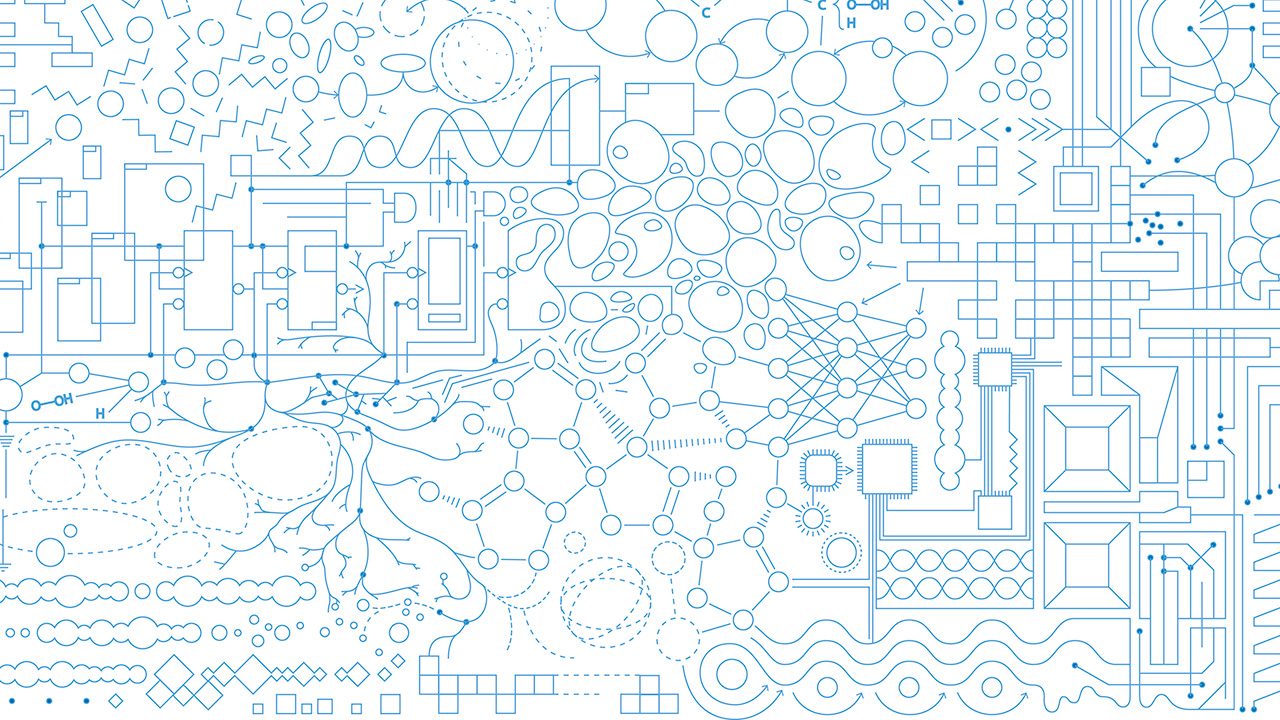
You can find the original article on FZ Jülich’s website here.
Neuronal circuit models help researchers better understand how nerve cells in the brain work together and can be used computationally to advance brain research. A key step toward computational neuroscience was the model of early sensory cortex developed by Dr. Tobias Potjans and Prof. Markus Diesmann, known as PD14. Published in 2014, it has become a research standard – as a basis for more complex brain models, as a testbed for computational methods, and as a benchmark for the performance of new computer systems.
In April 2024, researchers from around the world met at the Käte Hamburger Kolleg: Cultures of Research (c:o/re) at RWTH Aachen University to reflect on the model’s importance for work in computational and theoretical neuroscience on the occasion of its tenth anniversary. The results of the symposium have now been published in the journal Cerebral Cortex. In this interview, Prof. Markus Diesmann and Prof. Hans Ekkehard Plesser, lead author of the report, discuss the significance of PD14 and the opportunities and challenges of digital neuroscience, as illustrated for example by the European research platform EBRAINS.
Why was the PD14 model so successful?

Diesmann: We originally developed PD14 to better understand how the structure of neuronal networks affects their activity patterns. Over the past ten years, PD14 has inspired many lines of research. Researchers have used it as a building block for larger brain models, as a reference model for theoretical analyses, and as a benchmark for novel neuromorphic computer systems. This was made possible by systematic support for technology projects from the European Union over the last 20 years. Projects such as the Human Brain Project (HBP) have brought neuroscience into the realm of large-scale research and made EBRAINS possible. Within these projects, shared standards for the sharing and documentation of models were established. As a demanding use case, PD14 was selected as a demo already in the EU project BrainScaleS and has since driven further development.
“Sharing” is a key word. Why is this still so difficult for the community?

Plesser: Even today, many neuronal models are implemented in general-purpose programming languages such as MATLAB, Python, or C. This often limits their potential for reuse. Nevertheless, in the ten years since PD14 was published, neuroscience has made great progress in scientific software development. Research code is now created according to modern software-engineering principles, and the new field of Research Software Engineering (RSE) is gaining international importance. While hardware is usually replaced about every five years, scientific software such as the NEURON or NEST simulators remains relevant for decades. As a result, scientific software must be seen, operated, and funded as a permanent research infrastructure – a point that funding bodies have so far only partly addressed.
Where did this change in thinking come from?
Plesser: Large initiatives such as the Human Brain Project have changed how the community thinks. Models and simulation systems are now treated separately: simulation codes are provided as stable infrastructure, while researchers can investigate very different networks on the same platform. Open repositories such as OSB, ModelDB, or the EBRAINS Knowledge Graph make these models accessible worldwide, and standardized model description languages such as PyNN and NeuroML ensure compatibility.

Impact of the PD14 model
The model of the cortical microcircuit (center) had an impact on five aspects of research (clockwise from top): conceived to provide neuroscience insight, the model became a building block of more advanced models, served as reference for the validation of mean-field theories, drove the development of methods for model sharing, and became a standard for benchmarking of neuromorphic and GPU systems.
How did research data develop in parallel, and what does this mean for PD14?
Diesmann: The experimental data basis for large-scale models has improved significantly thanks to techniques such as 3D electron microscopy, high-resolution electrophysiology, optophysiology, and layer-specific MRI. Projects like MICrONS provide standardized datasets that make it easier to construct data-driven models. These new datasets enable the validation and further development of the PD14 model, especially with regard to network dynamics and functional tests. PD14 already serves as a blueprint for building new, larger brain models that are composed from existing building blocks. The model helps define standards for the exchange and reuse of models and promotes collaboration between computer science, physics, biology, and engineering.
A look into the future: where are models heading, and what role does AI play?
Diesmann: Future models will increasingly represent realistic, spatially organized structures and closed functional circuits of the brain. After all, the brain does not exist just to produce neural activity but to enable rapid information processing for the organism. The original PD14 model did not yet include function – but that is what we are working on now. This brings the vision of so-called digital twins of the brain closer: virtual counterparts of biological systems that allow experiments and hypothesis testing in silico. In contrast to today’s AI, the focus here is on uncovering the mechanisms of information processing in the brain. These insights, in turn, can inform future AI systems. Conversely, AI already supports this progress by learning complex relationships from large datasets and predicting neuronal responses.
Where do you see obstacles on this path?
Plesser: Many models are still developed individually and in an ad hoc manner, often without integrating existing infrastructures – as self-written code on a laptop. Sometimes we even hear: “Everything I care about I can do on my laptop.” But a new generation of researchers, shaped by international training programs and cloud-based model platforms like EBRAINS, is working more collaboratively and using shared tools as a common foundation. This development may mark a turning point at which neuroscience evolves from a discipline of individual pioneers into a collaborative large-scale enterprise.
About PD14
The PD14 model describes the connectivity of about 77,000 nerve cells with around 300 million synaptic connections under an area of only one square millimetre of cortical surface. It consists of fewer than 400 lines of Python code and can even be simulated on modern laptops. In the spirit of open and transparent science (FAIR principles: findable, accessible, interoperable, reusable), the model has been released in several variants. One of these is based on the PyNN language and has been made available to the research community via the Open Source Brain platform. PD14 has been very successful: by March 2024 it had been used as a component in 52 scientific studies and cited in over 230 publications.
Original publication: Hans Ekkehard Plesser, Andrew P Davison, Markus Diesmann, Tomoki Fukai, Tobias Gemmeke, Padraig Gleeson, James C Knight, Thomas Nowotny, Alexandre René, Oliver Rhodes, Antonio C Roque, Johanna Senk, Tilo Schwalger, Tim Stadtmann, Gianmarco Tiddia, Sacha J van Albada, Building on models—a perspective for computational neuroscience, Cerebral Cortex, Volume 35, Issue 11, November 2025, bhaf295, https://doi.org/10.1093/cercor/bhaf295
The Ambiguity of Sorting: How do technologies of separation bring us together?

Digital systems are based on acts of transformation from continuity and unity into discreteness and separation. These acts of transformation have been popularized in the multiple ways in which humans engage with AI systems and other forms of digital technologies. Everything we do is transformed, one could say, automatically into data. It is transformed into discrete units that can be computed. Digital technologies have become more than tools for research; people produce knowledge with them, engage emotionally through and with these systems, generating new forms and spaces of intimacy. At the same time, these technologies carry a history of creating disconnections, failing to account for different ways of engaging with the world. They are the result of a certain imaginary of the human and intelligence, one that leaves aside many other existing ways to be in the world. What kind of communities are enabled by technologies? What kind of technologies are successful in bringing communities together? Can we imagine a history of technology that is based on plural ways of understanding intelligence and the human? How can we design technologies that bring people together? How can we imagine technologies that enable communities?
The Ambiguity of Sorting is a pop-up exhibition and a panel discussion that takes place during the 8th edition of the Conference of the Society for the History and Philosophy of Computing. The event brings together installation, performance, and conversations to discuss how the history of intelligent systems embodied ideas of intelligence, the human, and how we live together. With the panel, we invite to think of a different history of computing, one where those that were not thought to be fitting within their categories were creating their own technologies all along.
With contributions by: Sasha Bergstrom-Katz, Ren Loren Britton, and Verena Friedrich
Organization and moderation: Ana Maria Guzmán Olmos
Thursday, December 18, 2025, 6 to 8 pm
Super C – 6th floor – Generali-Saal, Templergraben 57, Aachen, Germany
The event takes place on the 6th floor of the SuperC building. The 6th floor can be reached via an elevator where a wheelchair fits in. A barrier-free restroom is available. If you have any questions about the space, please write us to: events@khk.rwth-aachen.de.
The event will take place in English spoken language.
Abstracts
Unboxing Intelligence
Bergstrom-Katz’s project, Unboxing Intelligence, positions the intelligence test kit not merely as a scientific tool, but as a powerful actor in its own right and casts it at the center of a critical investigation into the construction and dissemination of intelligence. Composed of toys, games, puzzles, and instructional booklets, all organized into a handy kit, the test operates as a charismatic yet destructive object, one that has shaped and circulated ideas of measurable intelligence across the twentieth century and beyond. Approaching it through the lenses of artistic research, performance studies and material cultures, the project theorizes the test as a nesting doll of scientific readymades; it is a mass-produced and ideologically loaded object constituted of readymade theories, objects, and performances. This presentation, specifically, will present test as a readymade performance and will include a short new performance piece.
Find the talk and performance abstract as pdf documents here.
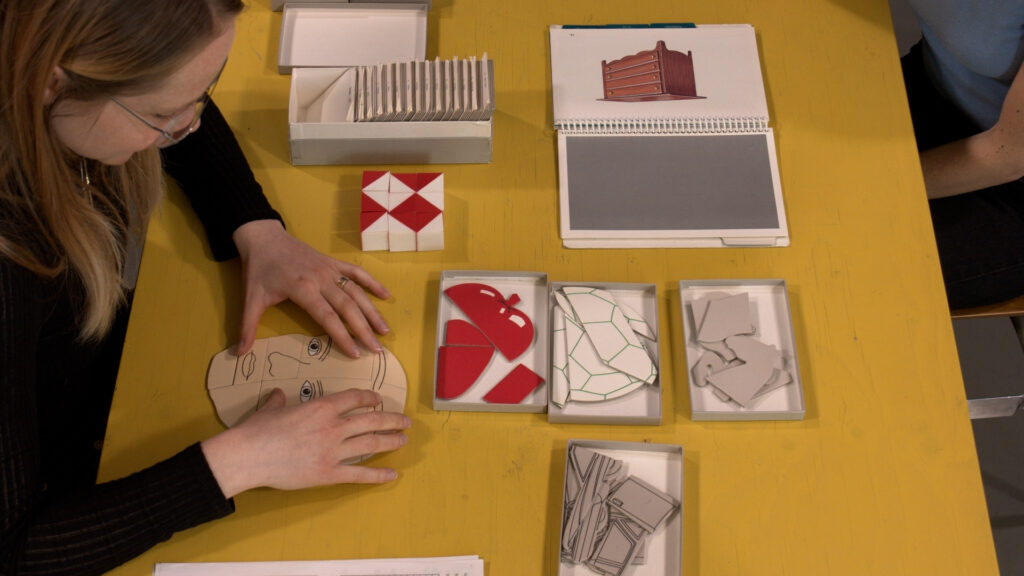
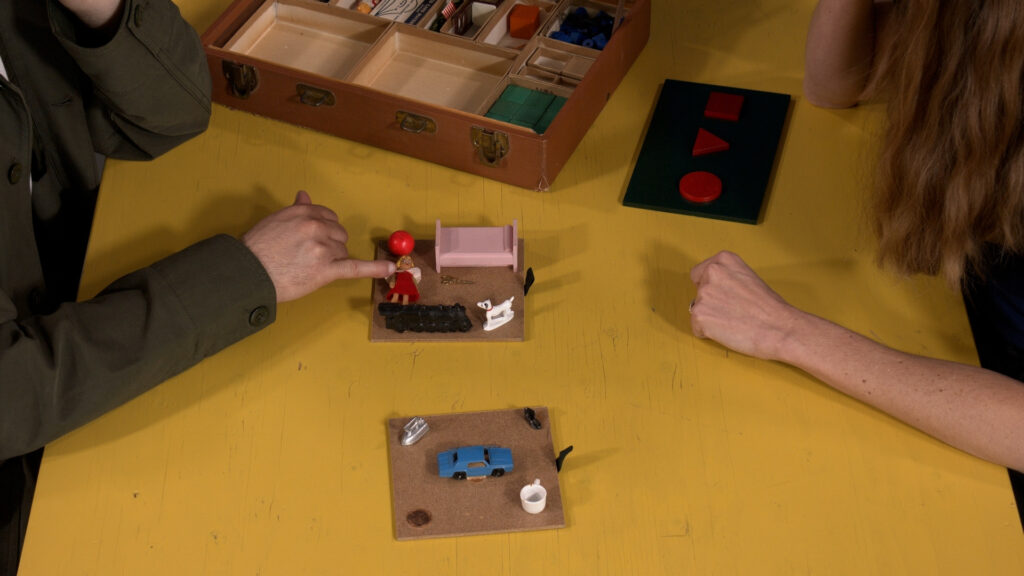
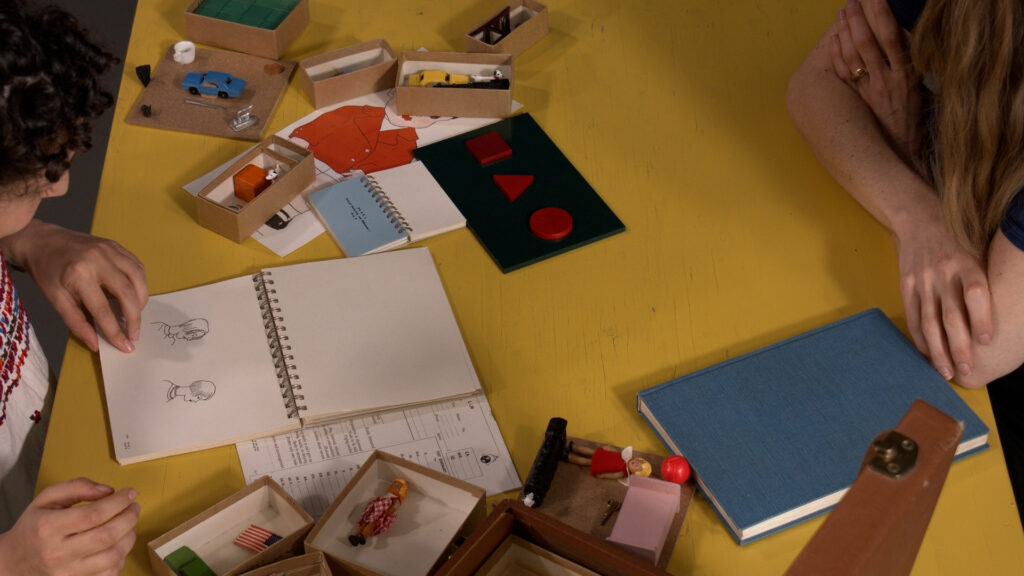
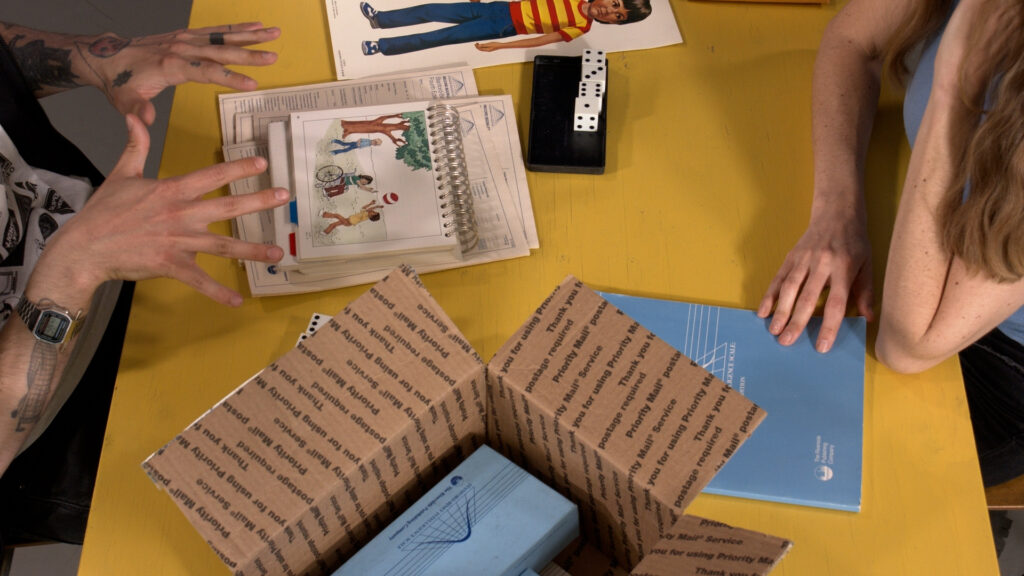
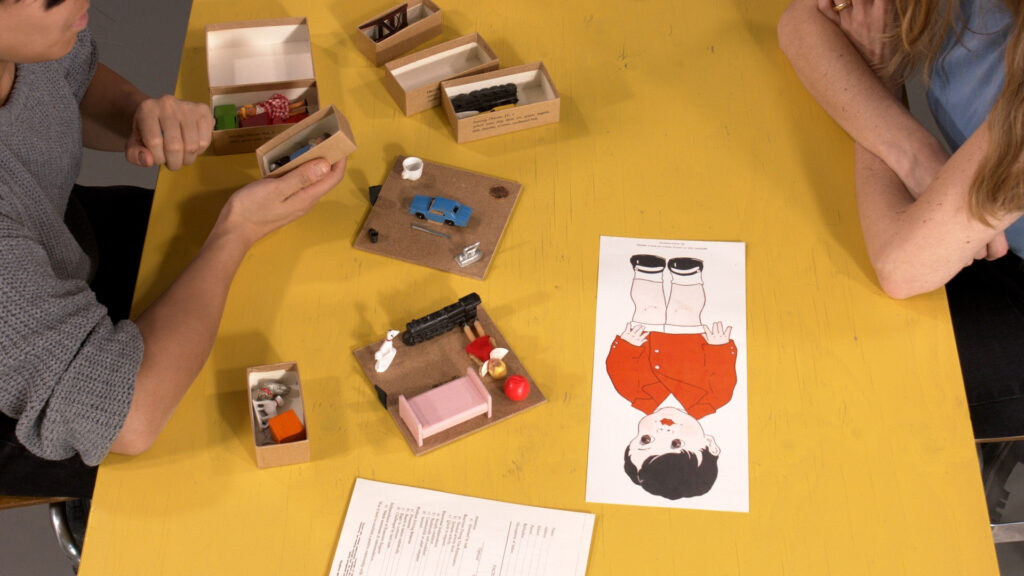
On the Subject of Tests: Opening Boxes, 2022
Video (still)
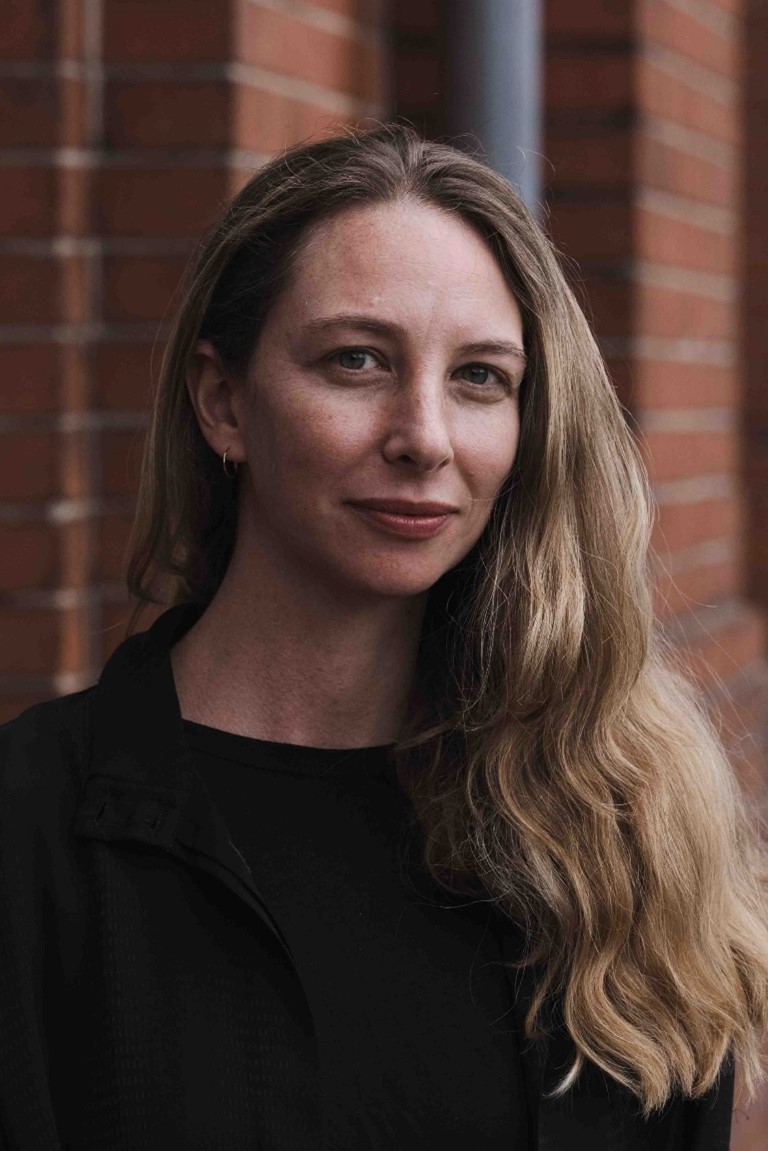
Sasha Bergstrom-Katz
Sasha Bergstrom-Katz is an artist, researcher and writer working in the intersections between the history of science, psychology, cognitive sciences and perception studies. She holds a PhD in Psychosocial Studies at Birkbeck, University of London in Psychosocial Studies and is a visiting postdoctoral researcher at Bielefeld University. Previously, she was a visiting researcher at the Max Planck Institute for the History of Science Berlin and the University of Groningen, Netherlands and in 2021 was a resident fellow at BS-Projects (Hochschule für Bildende Künste Braunschweig, Germany). She has exhibited at the Peltz Gallery, London; Inter Arts Center (IAC), Malmö, Sweden; HBK, Braunschweig; Los Angeles Municipal Art Gallery, Los Angeles, CA; In Lieu, Los Angeles, CA; AWHRHWAR, Los Angeles, CA; Human Resources, Los Angeles, CA and the Torrance Art Museum, Torrance, CA, among others.
Photo by Camille Blake
Indexing Tech for Disability Justice: blocks, boards, plates, shafts & volumes
Categories produce limits. Limits limit our imagination. Imagination is a resource that we need. We find each other by naming ourselves. What do we call it, let’s give it a name. When we go to the trans*crip meeting / club / bar / bookshop / chatgroup / the right doctor / hacking meeting / work session / meetup / class / workshop – we find each other. When we negotiate more space in categories that confine and open up possibility vis-a-vie broken systems – something changes.
This presentation follows the project: Indexing Tech for Disability Justice: blocks, boards, plates, shafts & volumes — negotiating the affordances of naming affinity and sites of embodiminded difference towards an index of technological hir- his – her- story. An Index that would serve an intersectional disability justice tech movement. Moving against a techno- racial- capitalist narrative assuming that people are only users — to be impacted upon and extracted from — this installation works with a series of historical intersectional crip, trans*, BIPoC innovations that shift the terms of what what we think of when we think of technology.

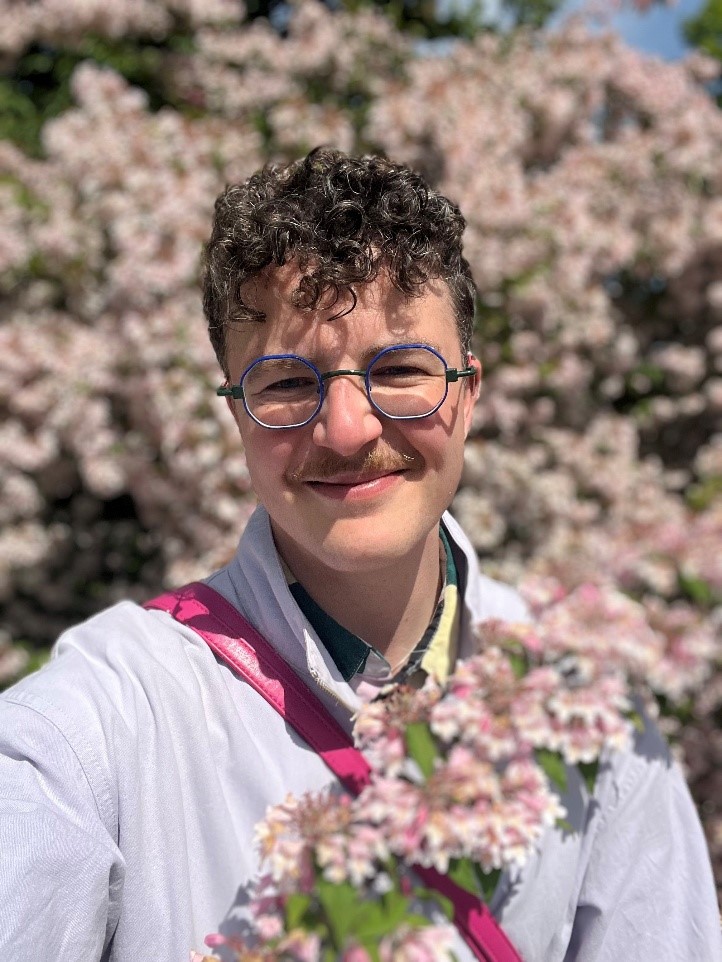
Ren Loren Britton
Ren Loren Britton is a trans*disciplinary artist-designer who reverberates with trans*feminism, technosciences, radical pedagogy and disability justice. Trans*feminist technoscience in their work follows the long wiggle of cyberfeminism; focusing on trans*, as in, transgender and trans*, as in, crossing contexts with feminist concerns. They are interested in the ways that socio technical systems & media makes lives accessible and pleasurable. Departing from the understanding that we live in a deeply ableist white supremacist world to be able to follow a justice oriented direction requires the rethinking and remaking of practices considering the terms of who fits where, at what scale, with what friction (or not) and why. These considerations accompany them with frameworks around disability justice, upholding and valuing all non-normative bodies and minds. Their artistic research is collaborative, engages their community and focuses on the critical technologies. Their work engages community narratives and invents media practices towards connecting non-linear futures, pasts and presents. Their work engaging hir- her- his- torical storytelling: tells otherwise stories about technologies, counter-pathologies and community connection.
Ren has shared artistic work within multiple institutions including ALT_CPH Biennale (Copenhagen), Transmediale & Haus der Kulturen der Welt & Martin Gropius Bau (Berlin), Constant (Brussels), Sonic Acts (Amsterdam), Kunsthalle Osnabrück (Osnabrück), Het Nieuwe Institute & Varia (Rotterdam) & Rupert (Vilnius). Recent academic articles have been published in Catalyst, MATTER and Digital Creativity and within edited volumes by Bloomsbery Academic, Spektor Books and Barbara Budrich.
Website: https://lorenbritton.com/
ERBSENZÄHLER
The project ERBSENZÄHLER (literally: “pea counter”, idiomatically: “bean counter”) explores the increasing quantification and datafication of life through mathematical-technical procedures and systems – from counting and sorting to statistics and computer-aided processes – and the worldview that accompanies them.
It consists of a series of industrial-looking sorting machines in which pea seeds are analyzed, classified, and sorted according to various parameters: from simple, quantifiable features such as weight to more complex ones like color or quality. Each station engages with different aspects of the quantification of life and the history of automation.
In my presentation, I use the ERBSENZÄHLER project as an aesthetic and conceptual lens to reflect on broader questions and make these more tangible: What shifts occur when fundamental human activities like counting, classifying, and sorting are increasingly delegated to machines and “intelligent” systems? In this context, I am particularly interested in the tension that arises when algorithmic decision-making replace subjective, situated, and ambiguous processes of human judgment.
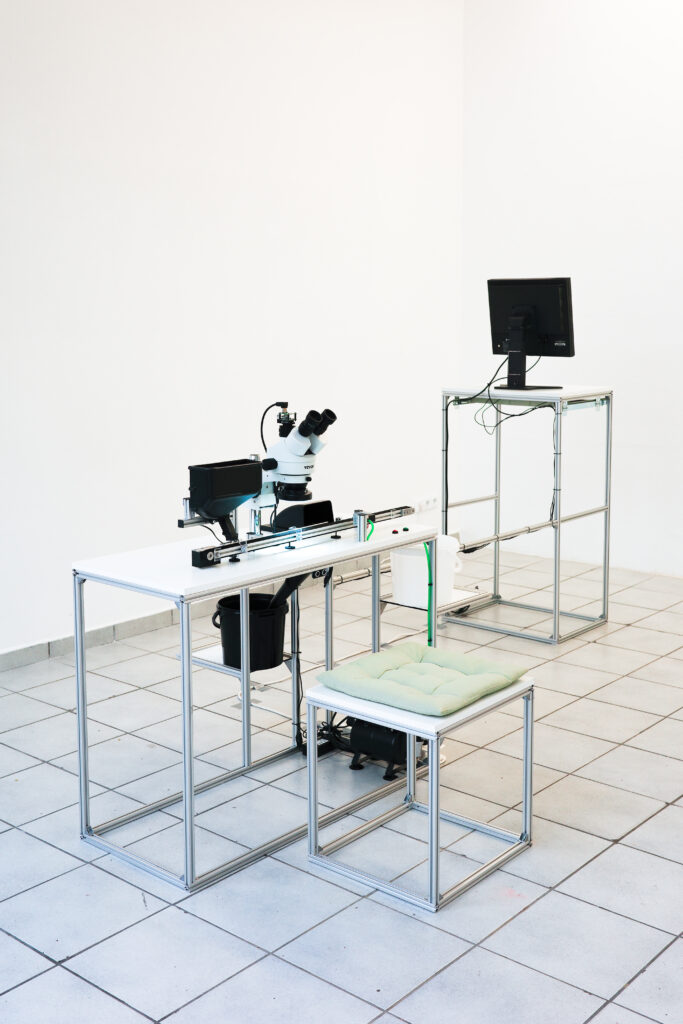
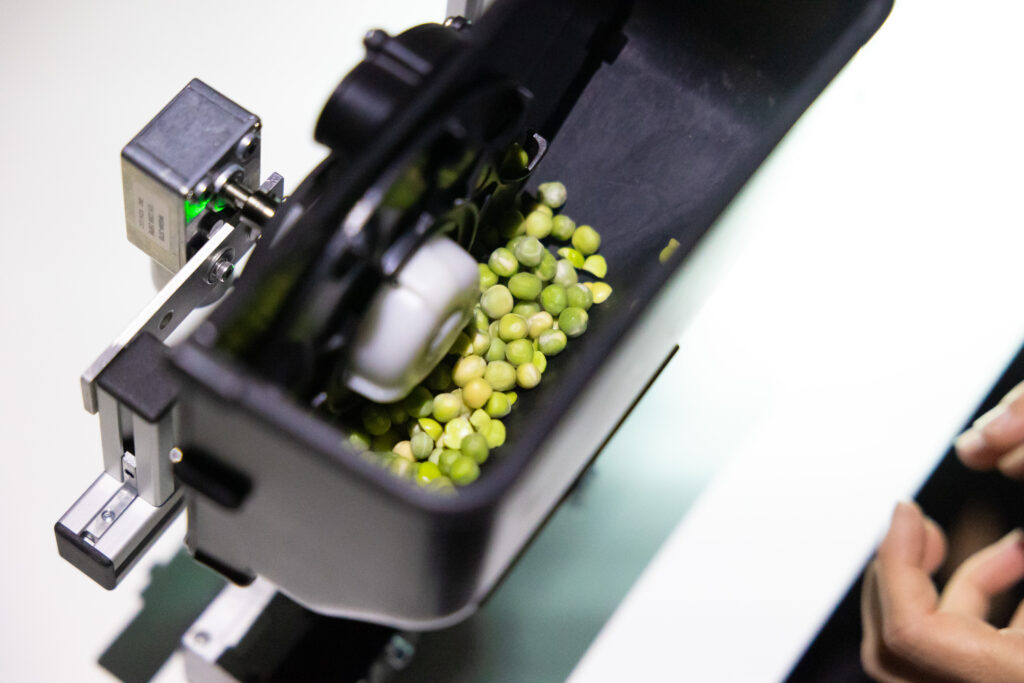
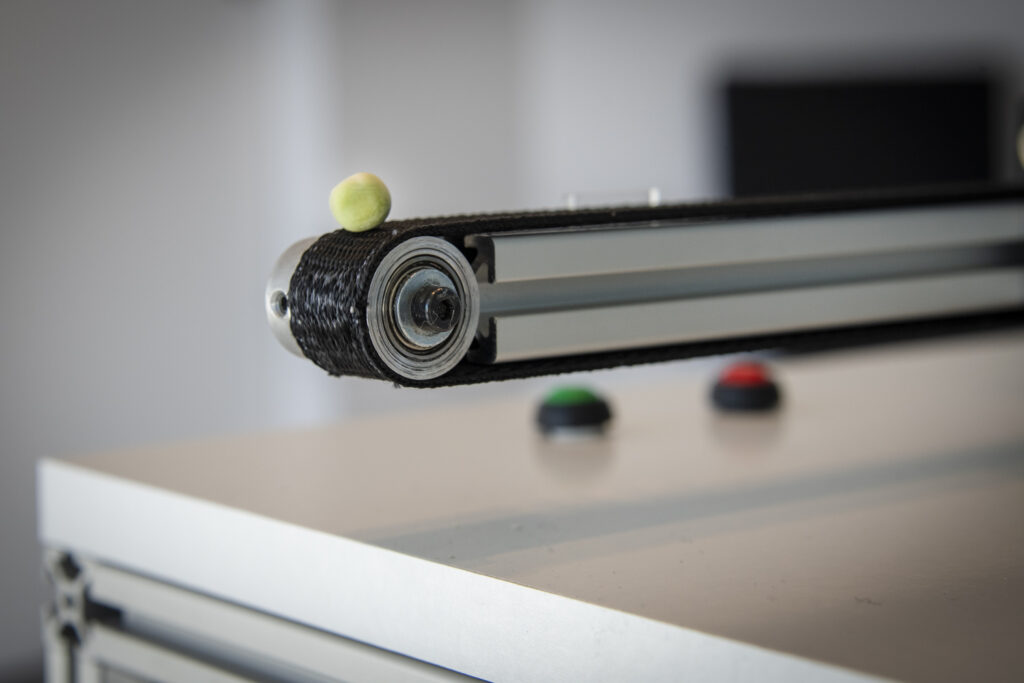
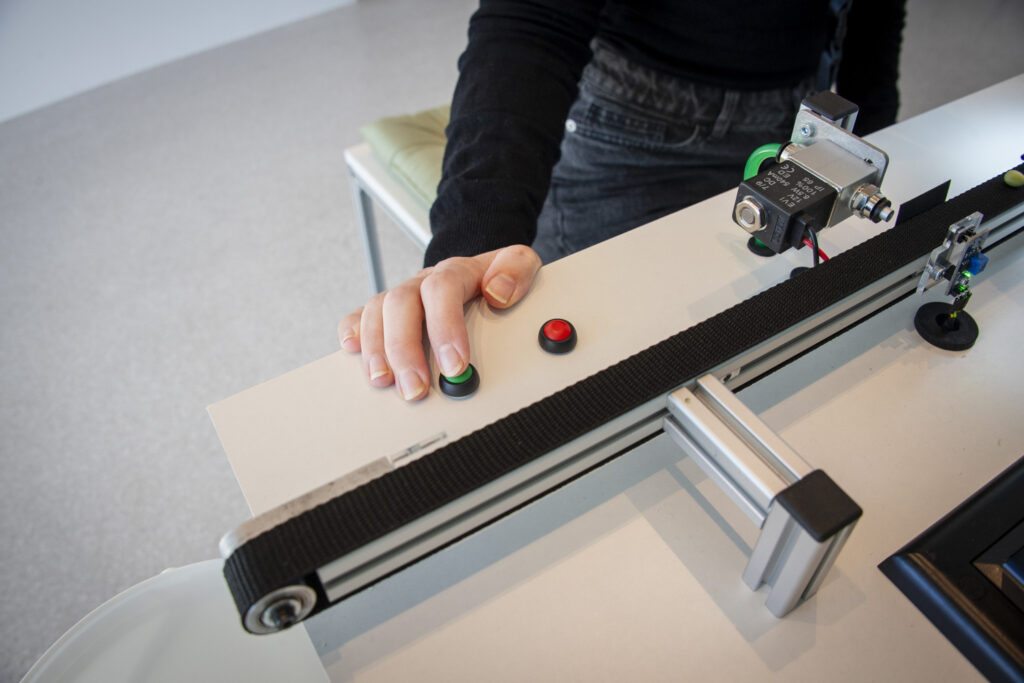
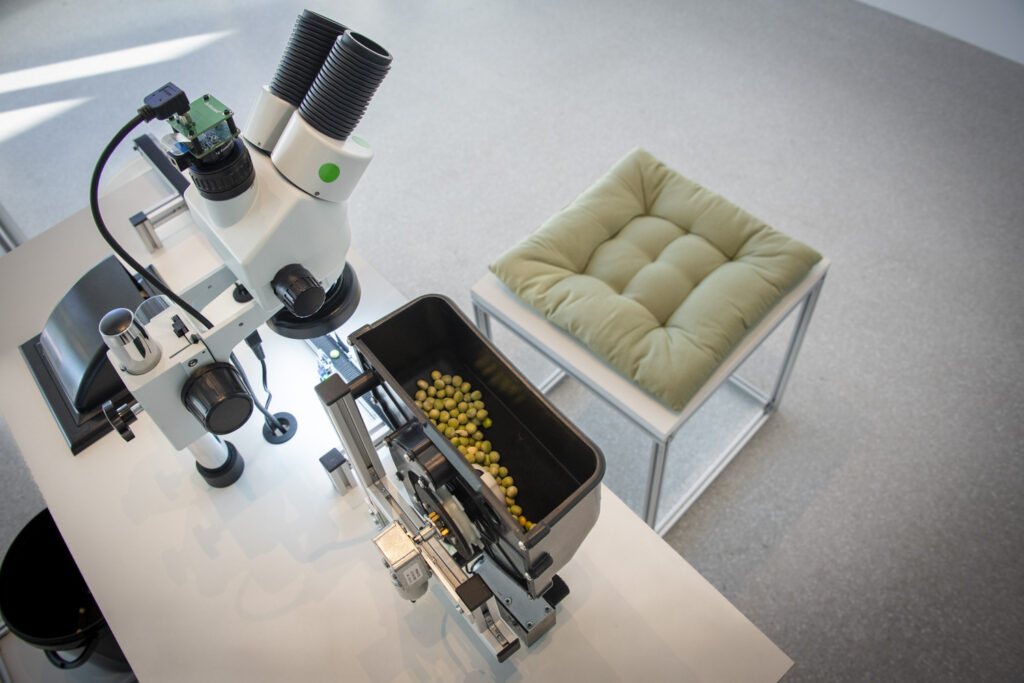
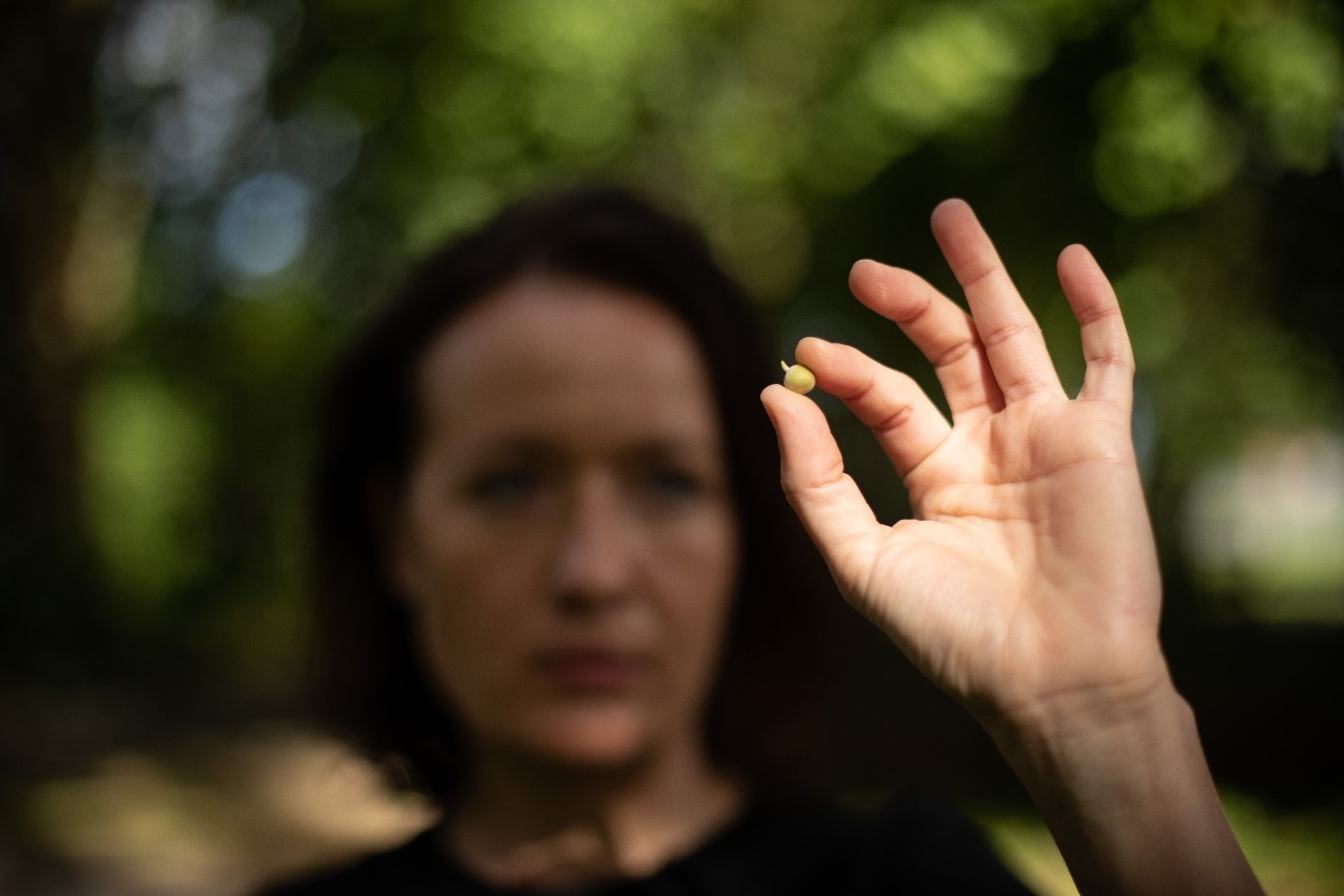
Verena Friedrich
Verena Friedrich is an artist and researcher working at the intersection of art, science, technology, and engineering. In her time-based installations, she blends organic, electronic, and sculptural media to explore the possibilities and limits of technological intervention and control. Drawing from scientific theories and engineering methods, her works often take the form of poetic machines or experimental setups that critically reflect on the technological conditioning of life.
Her projects have been presented internationally in exhibitions, festivals, and conferences, including ZKM Karlsruhe, Nam June Paik Art Center Seoul, New Media Gallery Vancouver, Kapelica Gallery Ljubljana, Ars Electronica Linz, and Chronus Art Center Shanghai. As part of her production processes, she has collaborated with research institutions such as SymbioticA (UWA), the Max Planck Institute for Biology of Ageing (Cologne), and the Laboratory for Stem Cell Bioengineering at EPFL (Lausanne).
Friedrich has received multiple awards and recognitions, including honorary mentions at Prix Ars Electronica and Japan Media Arts Festival, as well as the International Media Award for Science and Art from ZKM.
Website: www.heavythinking.org
Photo by Camilo Pachón – Stiftung Künstlerdorf 2022
Header photo: Sasha Bergstrom-Katz, On the Subject of Tests: Opening Boxes, 2022. Video.
Call for Applications 2026/27
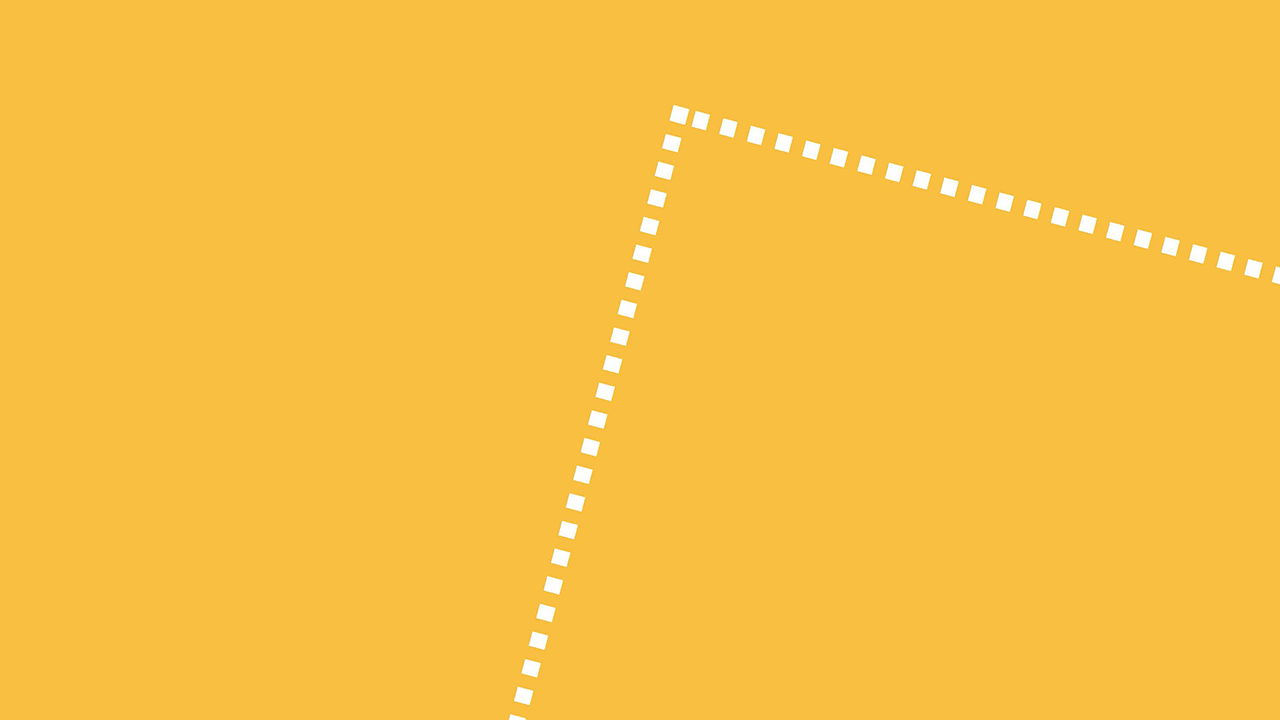
Open call for applications for fellowships (postdoctoral to senior level) starting in October 2026 for up to twelve months, application deadline December 31, 2025.
Fellowships
The Käte Hamburger Kolleg: Cultures of Research (c:o/re) is an international center for advanced studies for history, philosophy, and sociology of science and technology at RWTH Aachen University. It is funded by the German Federal Ministry of Research, Technology and Space. The center invites applications from scholars from the humanities and social sciences, as well as from natural, life, and technical sciences. The focus of the center’s work is on the manifold research cultures within the sciences, their commonalities and differences, and how they are transformed through interdisciplinary discourse. We are particularly interested in exploring the concepts of ‘digitality/complexity’, ‘globality/varieties of science’ and ‘expanded STS’ together with international fellows.
For the year 2026/2027, KHK c:o/re’s research will be centered around the topic of “varieties of science”. Proposals may address
- Studies comparing countries and their respective cultural-institutional contexts in which research is performed
- Methodological approaches of how we can analyze the differences between such cultural-institutional contexts of research
- Studies of a concrete variety of science looking at relevant aspects in the system of knowledge production in a selected country
Participation and contribution to the center
Fellows will join the international center for a maximum period of 12 months (minimum 6 months), starting in October 2026. The fellowships provide a full grant commensurate with applicants’ level of professional experience, working space in fully-equipped offices, logistical support, and access to the interdisciplinary research landscape and research labs at RWTH Aachen University. Fellows who have no other regular income during their fellowship will receive a monthly stipend.
Alternatively, the center can cover costs for a teaching replacement at the fellow’s home institution.
In order to create a stimulating intellectual environment among the resident research community, regular presence at the center and participation in its weekly events are mandatory. Residency in Aachen is required and the center can support fellows in the search for accommodation.
For more information about the fellowship program, please click here.
Location
RWTH Aachen University is one of the largest universities of science and technology in Europe. Located at the borders of Germany, Belgium, and the Netherlands (Euregio), it has close ties with STS institutes at the universities of Maastricht and Liège, and with the neighboring Jülich Research Center, a research campus of more than 5,000 researchers.
See for more information on RWTH Aachen University, visit their website.
Application Modalities
Applications are open to postdoctoral (PhD must be fully completed by the time of application) as well as senior researchers who have already distinguished themselves with outstanding work within the thematic focus of the center. The application (in English) includes the application form (link see below), a cover letter, curriculum vitae, list of publications, a writing sample (in English), and an exposé (max. 3 pages), in which the applicant presents her/his research project and its relation to c:o/re’s research program. An interdisciplinary outlook is advantageous. Please submit your application via our online platform that you find here.
The deadline for applications is December 31, 2025.
Female researchers and scholars from the Global South are particularly encouraged to apply. For further information please visit the FAQs on our website.

Tagungsbericht – Der singuläre Satz
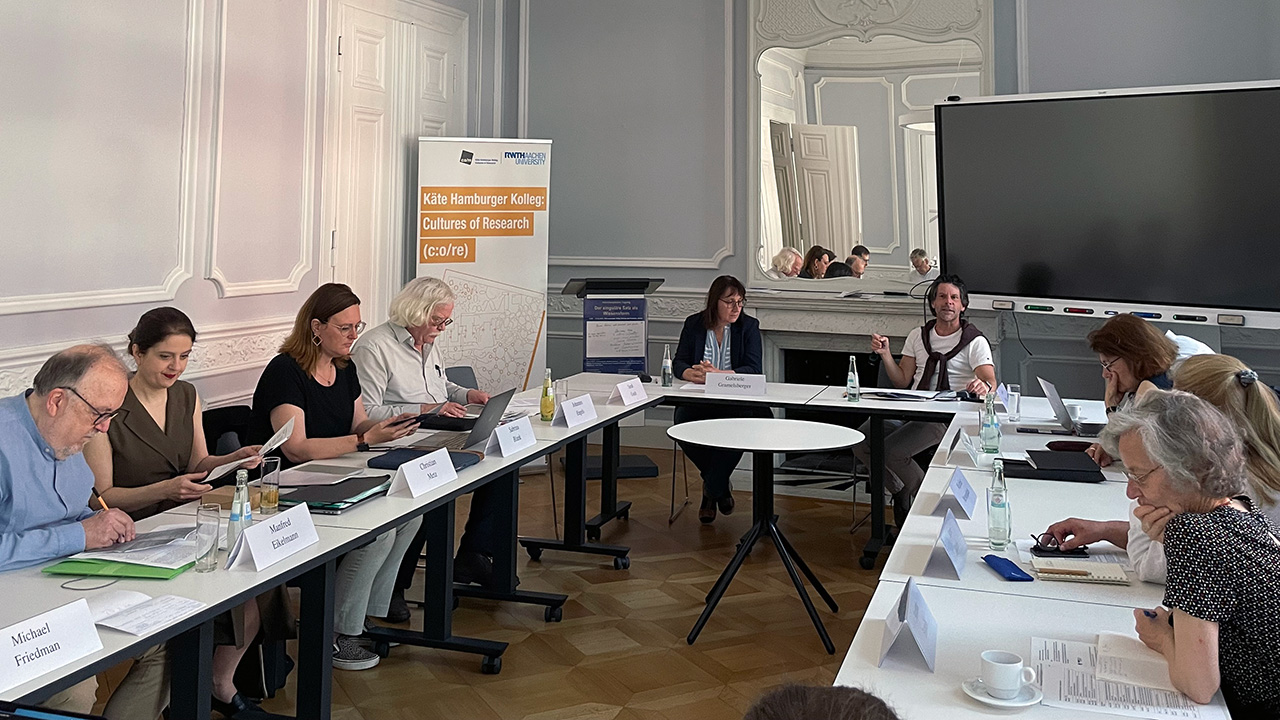
CAROLINE GALLA
Organisatoren: Research Area „Wissenskulturen“ in Kooperation mit dem Käte Hamburger Kolleg: Kulturen des Forschens (c:o/re), RWTH Aachen University
Ort: Käte Hamburger Kolleg: Kulturen des Forschens (c:o/re), Theaterstraße 75, 52062 Aachen
Datum: 11.06.2025–13.06.2025
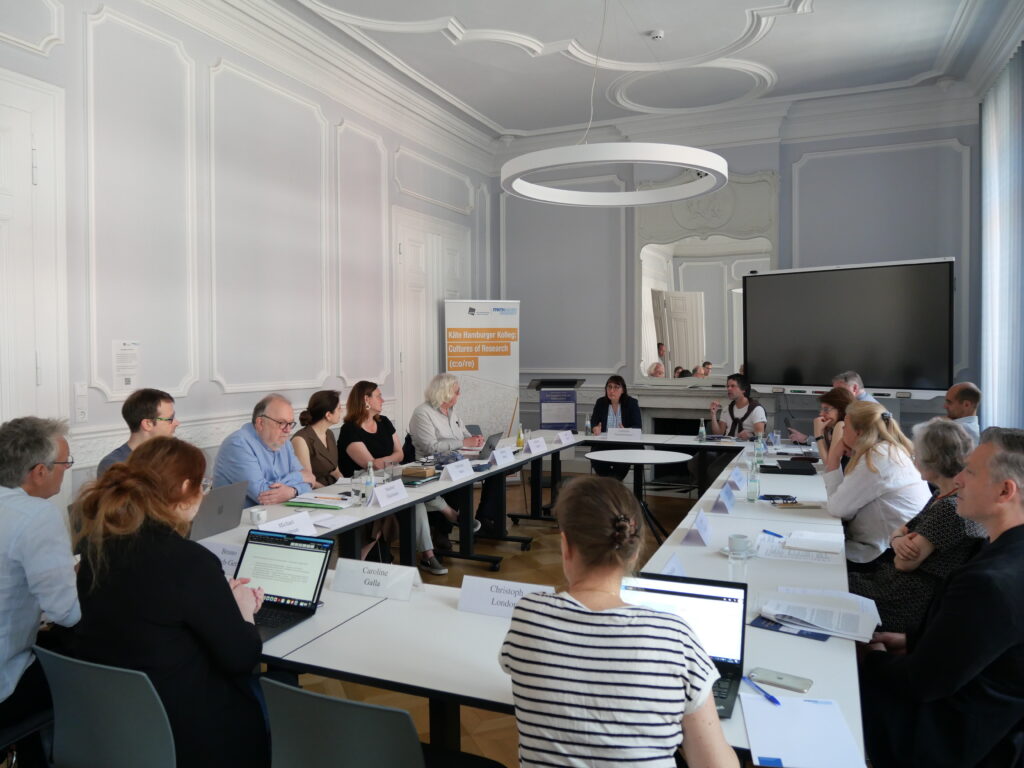
Einzelne singuläre Sätze, als in einem spezifischen historischen Kontext sowie in einem kulturellen und epistemischen Umfeld entstandene, verdichtete Formen und Präsentationen von Wissen, in denen unterschiedliche Wissensfelder und -kulturen in Satzform kulminieren, lassen sich, wie Christian Metz (Aachen), Caroline Torra-Mattenklott (Aachen) und Klaus Freitag (Aachen) in ihrer Einführung darlegten, sowohl über räumliche als auch über zeitliche Grenzen hinweg in verschiedensten Wissenskulturen nachweisen. Ob von Beginn an als Einzelsätze konzipiert oder einem größeren Textzusammenhang entnommen, aus dem sie sich herauslösten und eine eigenständige Zirkulation entfalteten, bildet der singuläre Satz in seinen vielfältigen Formgestalten eine Minimaleinheit kondensierten epistemischen Denkens. Die Sammlung, Zirkulation sowie De- und Rekonstruktion dieser Sätze, ihre Entnetzung und Rekontextualisierung verweisen auf das Potential singulärer Sätze als Transfermedium kollektiver Wissenskulturen. Sie ermöglichen Wissensgenerierung, Wissensdeutungen, Wissensverhandlung sowie Wissenszirkulation, in denen sie ihre Wirkkraft entfalten. Die Vielfalt dieser singulären Sätze, die beispielsweise in Form von Apophthegmata, Gnomen, Sentenzen, Glaubenssätzen, Protokollsätzen, Elementarsätzen oder Kernsätzen ihren Ausdruck finden, aus einer epochen- und disziplinübergreifenden sowohl wissenstheoretischen als auch wissenshistorischen Perspektive zu beleuchten, bildete das Anliegen dieser dreitägige interdisziplinär angelegten Tagung.
Die erste Sektion der Tagung suchte den singulären Satz als prägnante Form zu konturieren. Die formalen Merkmale singulärer Sätze, die zu deren Memorabilität und Prägnanz beitragen, suchte Winfried Menninghaus (Berlin) exemplarisch anhand von Sprichwörtern – als paradigmatischen Formen des singulären Satzes –, von Werbeslogans, humoristischen Zweizeilern sowie lyrischen Texte aufzuzeigen. Singuläre Sätze vereinten demnach eine hypernormative prosodische, morphologische und syntaktische Ordnungsstruktur, die sich insbesondere in der Häufung von Parallelismen auf der Ebene von Metrum und Reim manifestiere, mit einer ebenso hypernormativen Unordnungsstruktur, etwa in Form grammatischer Devianzen wie dem Fehlen mandatorischer Satzglieder. Diese Interaktion von Ordnung und Chaos bildet zwei Seiten einer spezifischen Poetik, deren wechselseitige Spannung entscheidend zur ästhetischen Wahrnehmung und kognitiven Verarbeitbarkeit singulärer Sätze beitrage. Darüber hinaus wiesen singuläre Sätze eine ausgeprägte Bildlichkeit aus. Dabei hätten empirische Studien zur Wahrnehmung und zu den Effekten dieser Merkmale singulärer Sätze auf kognitive Verarbeitungsprozesse, Abspeicherung sowie affektive und ästhetische Bewertungen gezeigt, dass insbesondere die von Selektivität geprägte kognitive Rezeption von Devianzen die Validität dieser singulären Sätze verstärke.
Eine ausführliche Analyse der singulären Sätze als semantisch verdichtete Formeln in Georg Christoph Lichtenbergs Marginalien und Sudelbüchern bot Elisabetta Mengaldo (Padua). Die kurzen, teils miteinander verschränkten Paragraphen, wie sie sich in Lichtenbergs Sudelbüchern manifestierten, zeichneten sich nicht nur durch aphoristische Kürze und Präzision im Sinne des antiken Ideal der virtus narrationis der brevitas aus, sondern hätten darüber hinaus zur Ausbildung eines neuen epistemischen Genres des Aphorismus innerhalb der wissenschaftlichen Lehr- und Forschungskultur – avant la lettre – beigetragen. Die textuelle Verdichtung der in den Sudelbüchern entstehenden Aphorismen sei als prozessuale Genese eines neuen Paradigmas für Erkenntnisprozesses zu verstehen, das nicht allein memotechnischen oder schreibökonomischen Zwecken diene, sondern zugleich durch die Verwendung von neuen topoi, die sich aus der Tradition der loci communes der Commonplace books herausentwickelten,eine poetische Funktion erfülle. Diese erwachse aus der produktiven Verschränkung zweier Diskursformen: der ars inveniendi und der Experimentalphysik mit ihrer Reflexion der eigenen Beobachtung.
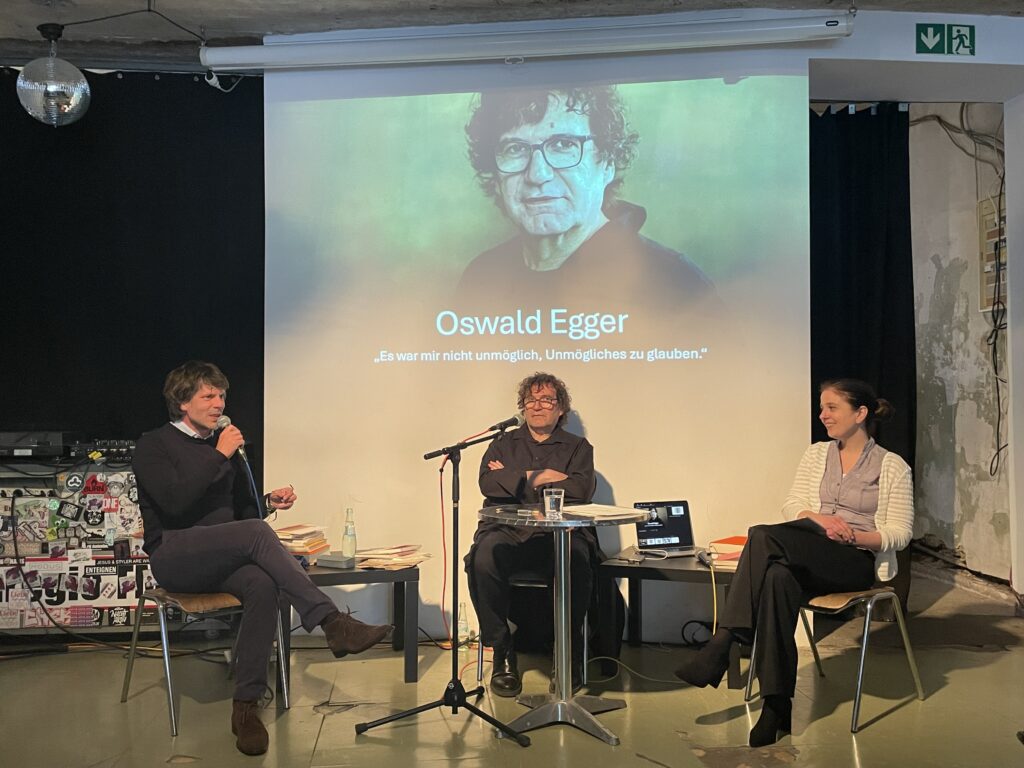
Mit einem wissenschaftstheoretischen und -philosophischen Überblick über die in den 1930er Jahren einsetzende Protokollsatzdebatte innerhalb des Wiener Kreises, die sich mit der Frage der Übersetzung von empirischen Beobachtungen in intersubjektiv nachvollziehbare singuläre Sätze, ihrer Form sowie ihrem universalem Geltungsanspruch befassten, leitete Gabriele Gramelsberger (Aachen) die zweite Sektion ein, die sich der Epistemologie mathematischer und physikalischer Einzelsätze widmete. Singuläre Sätze seine sowohl in der Wissenschaft als auch in der Philosophie zentrale Elemente der Generierung deklarativen, propositionalen Wissens, das sich über Sprache und Logik artikuliert. Die zwischen Rudolf Carnap und Otto Neurath ausgelöste sprachanalytisch beeinflusste Diskussion rund um den Protokollsatz und seinen Status, seien rund um den Status einer „Universalsprache“ der Wissenschaft ausgebrochen, die zum Ziel hatte, die quantitativ bestimmbaren und empirisch beobachtbaren Wahrnehmungsbefunde der Protokollsätze in physikalische Sätze und somit in eine Universalsprache zu überführen, welche keiner hermeneutische Vermittlung bedürfe.

Inwiefern die philosophische Reflexion über mathematischen Elementarsätze als atomare semantische Einheiten in Hans Blumenbergs philosophischen Schriften Ausdruck fanden, beleuchtete Michael Friedman (Bonn) anhand einer Untersuchung von Blumenbergs Kapitel „Im Fliegenglas“ aus seinem 1989 erschienenen Werk „Höhlenausgängen“ sowie seiner Notizen und Karteikarten zu seinem Exemplar von Wittgensteins „Bemerkungen über die Grundlagen der Mathematik“ (BMG), das im Deutschen Literaturarchiv Marbach überliefert ist. In Blumenbergs Werk vollziehe sich eine Auseinandersetzung mit Wittgensteins Philosophie der Mathematik, insbesondere mit der Frage nach der Form, Funktion und epistemischen Offenheit mathematischer Grundsätze, die Blumenberg als „kontrollierte Mehrdeutigkeit“ definierte. Dies verdeutliche sich an dem zum Ende von Blumenbergs Kapitel „Im Fliegenglas“ angeführten geometrischen Rätsel zum Rechteck, das er Wittgensteins BMG entnimmt, und das Blumenberg als Veranschaulichung „kontrollierter Mehrdeutigkeit“ mathematischer Rätsel und Elementarsätze zu ergebnisoffenen Prozessen der begrifflichen Neudefinierung diene.
Der epistemischen Rolle der Sprache in der Konstruktion naturwissenschaftlicher Erkenntnisse ging Arianna Borrelli (Berlin/Aachen) am Beispiel der ästhetischen Genese, Durchsetzung und Erweiterung des Energieerhaltungssatzes im Austausch mit anderen Wissensnetzen nach, der als Muster für spätere Erhaltungssätze diente. Ausgehend vom Streit zwischen Leibniz und Papin im 17. Jahrhundert um das wahre Maß der Kraft, die in der Natur erhalten bleibe, lasse sich zeigen, dass der Satz zunächst als sprachlicher Ausdruck eines noch nicht mathematisierten Naturprinzips fungiert habe, das von beiden in unterschiedliche messbare Größen überführt worden sei. Mit der Entwicklung der klassischen Mechanik im 18. Jahrhundert sowie im Zuge von Industrialisierung und der Standardisierung von Messverfahren im 19. Jahrhundert habe sich die Form des Erhaltungssatzes entsprechend der Entwicklung naturphilosophischer, religiöser, naturwissenschaftlicher und wirtschaftlicher Wissenskulturen im Rahmen eines epistemischen Transfers von der Vorstellung „Kraft“ hin zur Konzeption „Energie“ gewandelt und zum übergeordneten Naturprinzip des Energieerhaltungssatzes verdichtet. Dieser habe mit dem Aufkommen der Quantenphysik und der Allgemeinen Relativitätstheorie zu Beginn des 20. Jahrhunderts neue Impulse erhalten. Seine epistemische Autorität habe sich dabei nicht allein aus empirischer Gültigkeit ergeben, sondern auch aus seiner semantischen Wandlungsfähigkeit und Anschlussfähigkeit an verschiedene Wissenskulturen, die durch die Flexibilität der Sprache eine Verbindung zwischen Wissensfeldern sowie die Überführung in mathematische und messbare Größen ermöglicht habe.
Die dritte Sektion suchte die Kompilation, Kontextualisierung und Vernetzung singulärer Sätze in ihren jeweiligen Umfeldern aufzuzeigen und wurde von Dr. Christian Kaiser (Bonn) eröffnet, der eine Analyse der Funktion singulärer philosophischer Sätze in mittelalterlichen, für die Universitätslehre bestimmten medizinwissenschaftlichen Werken am Beispiel des an der Wende zum 14. Jahrhundert verfassten Conciliator differentiarum philosophorum et praecipue medicorum des Petrus von Abano präsentierte. Demnach zeige sich anhand unterschiedlicher, aus antiken und frühmittelalterlichen Werken stammender naturphilosophischer, metaphysischer, moralphilosophischer und politiktheoretischer Einzelsätze, die als wissenschaftliches Fundament, als selbstständige Lehrsätze oder als Glaubensbekenntnisse in den medizinischen Schriften Verwendung gefunden hätten, dass das Zitieren dieser Sätze ein zentrales methodisches Element innerhalb wissenschaftlicher Abhandlungen dargestellt habe. Sie hätten dabei weniger als zentrale exempla, sondern vielmehr als situationsspezifisches Sampling fungiert, das in die wissenschaftliche textura eingewoben worden sei. Referenzen und Zitate seien dabei weit über eine bloße Indienstnahme von Autoritäten hinausgegangen und hätten – vor dem Hintergrund des Streits der Fakultäten und der Frage nach dem Wissenschaftsanspruch der Medizin – den Prozess der Formierung eines universitären medizinischen Wissensdiskurses und Machtanspruches unterstützt. Dieser habe sich zunehmend zu einem „Wissenskult“ verdichtet und das ärztliche Handeln sowie die medizinische Gelehrsamkeit in ein von anderen universitären Disziplinen mitgetragenes Wissensnetz bzw. Weltbild eingebettet.
Manfred Eikelmann (Bochum) richtete den Blick auf die Wissenspraktiken in den Apopthegmata des Erasmus von Rotterdam (1531) und ihrer ersten deutschen Übersetzung durch Heinrich von Eppendorf (1534), die zu Beginn der Frühen Neuzeit zu einer selbstständigen Wissensform avancierten und von einer humanistischen Wissenskultur zeugten, in der durch die Rezeption antiker Aussprüche Erfahrungs- und Weltwissen generiert wurde. Dabei handele es sich bei den Apophthegmata um eine rhetorische wie epistemische Kleinform, die als Transfermedium antiken Erfahrungswissens fungiere und das Ziel verfolge, sprachliche wie epistemische Tugenden zu kultivieren. Die einzelnen Aussprüche, oftmals okkasionelle Sprechakte in konkreten sozialen und politischen Situationen, transportierten in prägnanter Weise moralisches, praktisches und insbesondere sprachliches Handlungswissen. In epistemischer Hinsicht fungierten die Apophthegmata als Topoi, die Wissensbestände speicherten und diese nicht nur erinnerbar, sondern auch rekontextualisierbar und über Register vielfältig vernetzbar machten.
Mit einem Vortrag zu den Anfangsformeln des in der westafrikanischen Hone-Sprache entworfenen Storytellings eröffnete Anne Storch (Köln) die letzte Sektion, die Ästhetik, Politik und Wirkkraft singulärer Sätze in den Blick nahm. Im Zentrum stand dabei der erste Satz einer Erzählung, der nicht nur als singulärer Auftakt fungiere, sondern eine mimetische Wirkkraft entwickle, durch die Erzählung als verkörpernde-performative Handlung erfahrbar werde. Der erste Satz einer Erzählung wirke dabei als besonders markierter Anfang, der einen neuen liminalen Raum eröffne, und zugleich als Teil einer Tradition permanenter Re-Kontextualisierung, in der das Gesagte stets überschrieben werde. So bilde der erste Satz – etwa in der parallelistische Formel „My story killed one, killed one, killed one“ – eine Art ritualisierte Schwelle, die zwischen Sichtbarem und Unsichtbarem, Gegenwart und Erinnerung, Erinnerung und Vergessen vermittele. In diesen plurilingualen, liminalen Erzählräumen erscheine Sprache selbst als Medium der Brechung, der Übersetzung und der Transformation, der Beziehung und der Subjektivierung.
Sabrina Blank (Aachen) gewährte in ihrem Vortrag einen Einblick in die Genese, Tradierung und autoritativen Wirkkraft des singulären Rechtsatzes zur päpstlichen Prärogative der Nichtjudizierbarkeit, der sich im Laufe des Früh- und Hochmittelalters als prägnante rechtliche Formulierung herausbildete, die nicht nur zunehmend normative Geltung beanspruchte, sondern auch Autorität generierte. Die früheste Erwähnung dieses Satzes, der schließlich auf dem Weg der traditio im Codex Iuris Canonici (CIC) von 1917 festgeschrieben wurde, finde sich im Constitutum Silvestri, einer im Kontext der krisenhaften Kontingenzerfahrung der umstrittenen Papstwahl des Symmachus an der Wende des 5. zum 6. Jahrhunderts als Instrument der Stabilisierung der päpstlichen Stellung entstandene und von der jüngeren Forschung als verfälscht identifizierte Synodalakte. Über private Rechtskompilationen gelangte der Satz im 9. Jahrhundert ins fränkische Reich, wo er – etwa bei Hinkmar von Reims – bereits als geltendes Recht rezipiert wurde. Im Verlauf der Papstschismen des 12. Jahrhunderts avancierte er zunehmend zur tragenden Rechtssatz päpstlicher Legitimationsstrategien, die in das Papstwahldekret des Dritten Laterankonzils mündeten.
Der komplexen und mehrstufigen Genese und Wirkkraft des Kanons sentenzenhafter Aussprüche der Sieben Weisen und ihrer Tradierung widmete sich Johannes Engels (Köln). Die aus dem archaischen Hellas stammenden Weisheits-, Lern- oder Sinnsprüche zeichneten sich durch Kürze und Prägnanz aus; sie enthielten Bildungs- und Weltwissen in generalisierter und verdichteter, leicht memorierbarer Form und verdichteten alltagstaugliche Lebensweisheiten in leicht movierbarer Gestalt. Diese Sätze seien keiner philosophischen Schule entsprungen, sondern könnten Akteuren mit politischer und sozialer Wirkkraft innerhalb ihrer Polis zugeschrieben werden. Ihre Kanonisierung sei dynamisch verlaufen und habe sich stark lokal geprägt gezeigt. Diese Aussprüche, deren Autorität in der Zustimmbarkeit bzw. Zusprechbarkeit des in ihnen enthaltenen Gemeinsinns im Sinne eines common sense gelegen habe, hätten sich über ihre Rezeption in Sammlungen bereits seit dem späten 4. Jahrhundert v. Chr. bis ins 21. Jahrhundert durchgesetzt und auch in bildlichen Darstellungen ihren Niederschlag gefunden.
Die Vielfalt der Beiträge haben gezeigt, wie gewinnbringend ein interdisziplinärer Zugriff auf das Verständnis der Form, der Funktion und Epistemologie singulärer Sätze sein kann. Durch die unterschiedlichen Perspektiven wurde deutlich, dass singuläre Sätze als verdichtete Denkformen, nicht allein als prägnante und memorable Minimaleinheiten auftreten, sondern auch als epistemische Kristallisationspunkte, die in verschiedensten Wissenskulturen eine tragende Rolle für die Generierung, Zirkulation und Rezeption von Wissen spielen. Die Abschlussdiskussion machte deutlich, dass die Relevanz singulärer Sätze weit über ihre semantische Verdichtung hinausreicht: Ihre illokutionäre Kraft, ihre Funktion im Rahmen von gesellschaftlicher Stabilisierung oder Kritik sowie ihre Rolle als Transfermedien zwischen unterschiedlichen Wissensfeldern rückten ebenso in den Fokus wie Fragen nach der Terminologisierung, der Metaphorizität und der stilistischen Konstruktion. Insbesondere in der Spannung zwischen epistemischer Verdichtung und erklärungsbedürftiger Obskurität, zwischen universellem Geltungsanspruch und kultureller Situiertheit wurde deutlich, dass der singuläre Satz als Gegenstand nicht nur der historischen und systematischen Analyse bedarf, sondern zugleich Anlass zu metareflexiven Überlegungen über die Narrativität des Satzes gibt. Dabei offenbarte sich die Form des singulären Satzes als ambivalent und erklärungsbedürftig – sowohl innerhalb einzelner Disziplinen als auch in ihrer historischen Kontextualität und sprachlichen Ausformung.
Konferenzübersicht:
Christian Metz, Caroline Torra-Mattenklott, Klaus Freitag (Aachen): Der singuläre Satz als prägnante Form
Sektion I: Der singuläre Satz als prägnante Form
Winfried Menninghaus (Berlin): Drei Faktoren memorabler Einzelsätze
Elisabetta Mengaldo Elisabetta Mengaldo (Padua): Sätze als verdichtete Formeln. Lichtenbergs Marginalien und seine Sudelbücher
Lesung und Gespräch von und mit Oswald Egger
Sektion II: Epistemologie mathematischer und physikalischer Einzelsätze
Gabriele Gramelsberger (Aachen): Protokollsatzdebatte – Überprüfbare singuläre Sätze
Michael Friedman (Bonn): Blumenberg, Wittgenstein und (mathematische) Elementarsätze
Arianna Borrelli (Aachen/Berlin): Erhaltungssätze: Die Rolle der Sprache in der Konstruktion naturwissenschaftlicher Erkenntnis
Sektion III: Singuläre Sätze und ihr Umfeld: Kompilation, Kontextualisierung, Vernetzung
Christian Kaiser (Bonn): Die Methodik des Samplings philosophischer Einzelsätze in medizinischen Quaestiones des Mittelalters
Manfred Eikelmann (Bochum): Denkwürdige Spruchszenen. Wissenspraktiken in den Apophthegmata des Erasmus von Rotterdam und ihrer ersten deutschen Übersetzung (1531- 1535, 1534)
Sektion IV: Ästhetik, Politik und Wirkkraft singulärer Sätze
Anne Storch (Köln): Der Satz, der am Anfang ist
Sabrina Blank (Aachen): Von der Fälschung zum legitimierten Rechtsanspruch des Papstes: Die Tragweite des singulären (Grund-)Satzes der päpstlichen Nichtjudizierbarkeit im Mittelalter
Johannes Engels (Köln): Die Sentenzen der Sieben Weisen des antiken Griechenlands als ein Beispiel epochen-übergreifend einflussreicher ‚singulärer Sätze‘
, Fotos von Jana Hambitzer
“The question of academic freedom acts as a seismograph for current processes of change in the production of scientific knowledge” – Interview with Gabriele Gramelsberger and Stefan Böschen
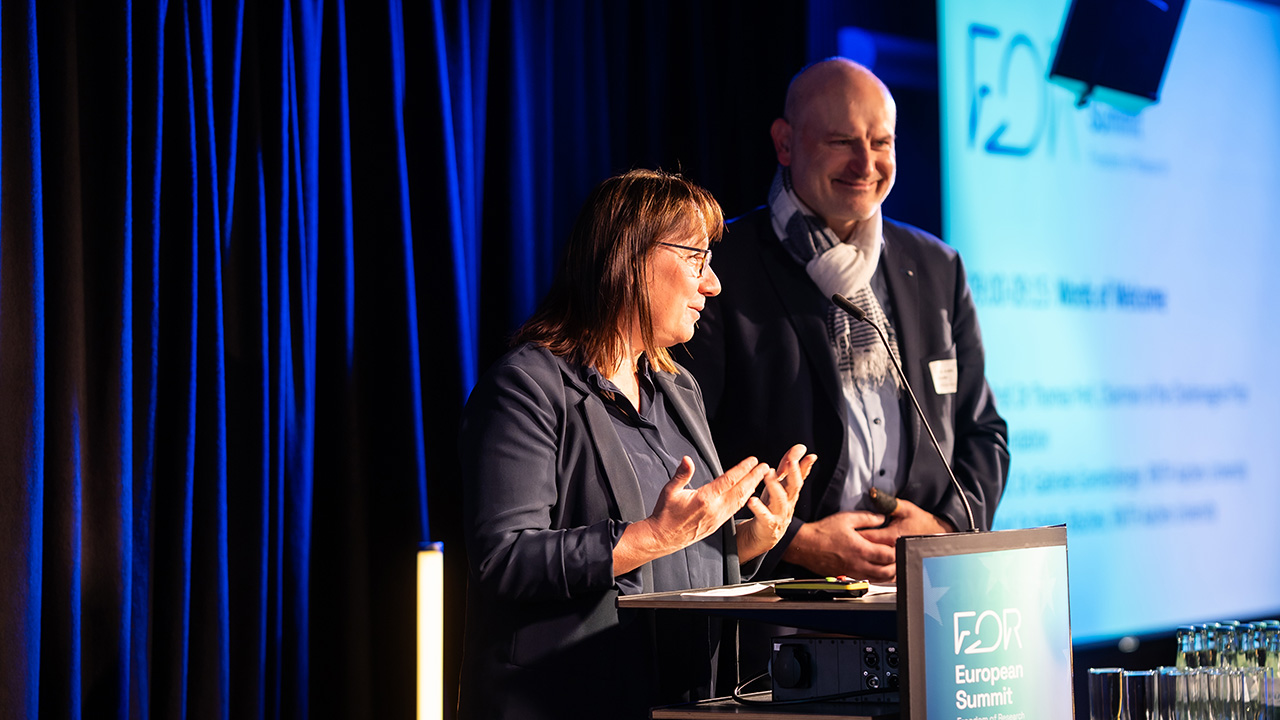
On November 5 and 6, 2025, the second edition of “Freedom of Research: A European Summit” will take place in Aachen. This year’s focus topic is “Europe in Times of Division.”
In an era of political tensions and division, academic freedom is under increasing pressure. How can Europe protect itself against threats to science, including disinformation, political interference, and social division? During the summit, we want to discuss ways to uphold shared values, safeguard scientific exchange, and strengthen trust in European institutions. We also aim to explore ways to foster academic freedom and democracy across Europe. Together with scholars, policymakers, and artists, we will address these questions through various formats. The event is jointly organized by the Charlemagne Prize Foundation, RWTH Aachen University’s Knowledge Hub, and c:o/re.
Before the start of the summit, the KHK c:o/re directors Gabriele Gramelsberger and Stefan Böschen discuss the urgent matter of academic freedom and share their expectations for the event in light of the challenges that educational institutions face.
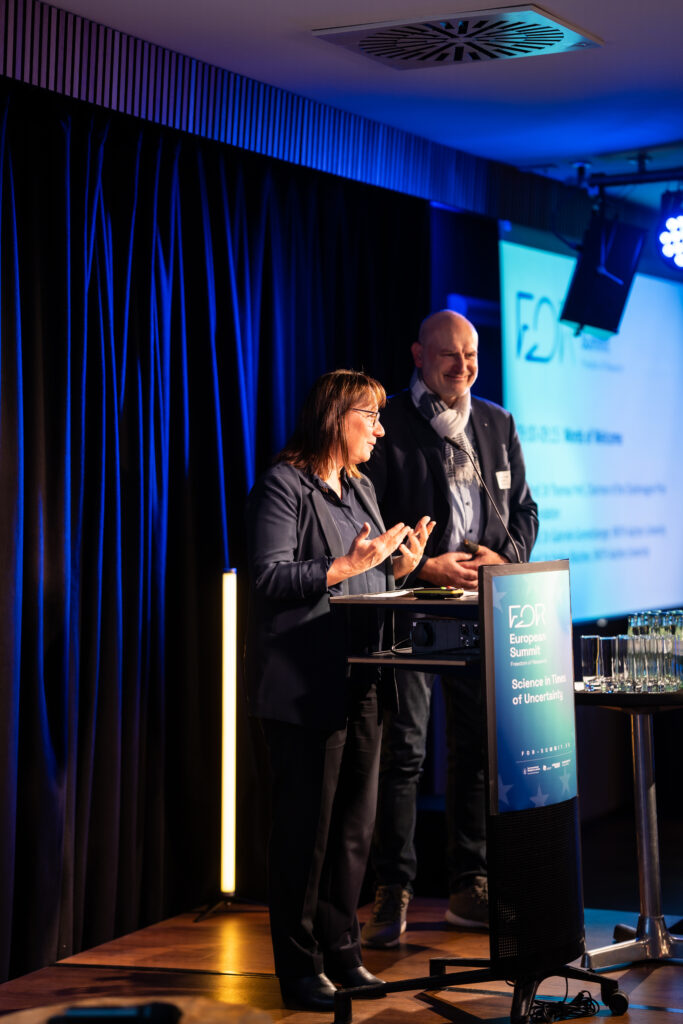
How do you view academic freedom in relation to c:o/re’s research interests?
The question of academic freedom acts as a seismograph for current processes of change in the production of scientific knowledge. Of course, we are initially confronted with right wing attacks on the institution of universities. But this should not distract us from the more hidden forms of restriction on freedom of research, such as the forced commercialization of research or the digitalization of research and its side-effects on freedom of research. We examine the varieties of these threats as changes in cultures of research.
How would you classify the freedom of research and science in Germany and Europe?
At the moment, the situation in Germany is still basically good, although we must remain alert here too. However, we are already observing significant restrictions in various European countries (think of Hungary). Budget problems are also intensifying in Germany, and since the higher education system is organized across the German federal states and the austerity measures are poorly synchronized, this could lead to more or less significant upheavals. To put it pointedly, this may raise the question of which disciplines will continue to be protected and which will be deemed expendable.
What dangers do you see, and which developments do you consider dangerous?
Academic freedom can be restricted by a wide variety of political interventions. It is precisely the diversity of possible points of intervention that leads to a lack of clarity regarding the potential threats to academic freedom. This is what makes the current situation particularly dangerous, because it increases the likelihood that influences that may later prove decisive will not be recognized at the moment when the decisions are taken.
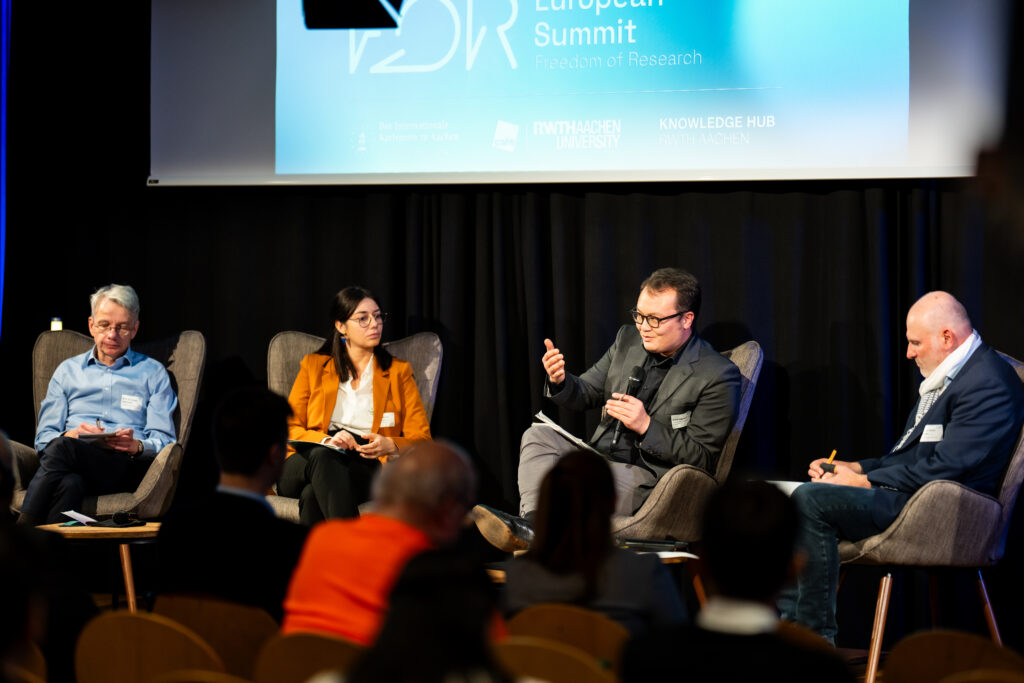
How can science protect itself from targeted disinformation and political influence?
On the one hand, this question is easy to answer because scientific independence still applies for many scientific endeavors. However, this independence is already coming under pressure because, for reasons that are initially understandable, such as the need for science to be relevant, research is oriented toward specific goals and is therefore restricted. The boundaries here are sometimes very fluid. And this is precisely what makes the issue so problematic.
In times of division, how can common values be preserved, scientific exchange secured, and trust in European institutions strengthened?
Open dialogue is the only way to achieve political goals and decisions. Isolation, exclusion, and radicalization of debates are the wrong approach. Freedom requires respect and mutual recognition. Furthermore, European values such as freedom, democracy, access to education, human-centered politics have to be protected against attacks. This is also a task of institution-building respectively their further development.
How can divisions be overcome and bridges be built within and outside academia, between social groups, and between politics and science?
This is a very complex question. That is why it may be worth considering only one seemingly paradoxical point. With Executive Order 13985, the Biden administration sought to strengthen diversity in universities. This led to the establishment of strong diversity units at universities and restricted the meritocratic principle of science. It also gave Trump a very welcome opportunity to intervene even more deeply in academic freedom in order to reverse this policy. When considering protective measures, one should always consider the possible undesirable consequences.
What are your hopes for the summit?
This time, we are hoping for two things in particular. First, we would like to gain insights that will enable us to better assess where and why academic freedom is under particular pressure. Second, we hope that a comparative perspective across different regions of the world will teach us something about the respective cultural and institutional conditions that shape freedom of research.
What is the KHK’s interest in the joint event with the Charlemagne Prize Foundation and the Knowledge Hub?
This cooperation provides an outstanding opportunity to create a space for reflection on these issues, in which very different actors can engage in dialogue. And in view of the Charlemagne Prize Foundation’s guiding principle of promoting the idea of Europe as an open and liberal society, it is crucial to focus on this important institution for the development of democracies. If we want to continue to develop Europe democratically, then it must be the concern of all responsible actors and citizens to work to safeguard freedom of research and to explore appropriate ways of doing so together.

For more details, including a list of speakers and the full program, please visit the event website.
To register, please follow this link.
To get an idea of what the last summit was like, take a look at this and this blog posts.
Photo Credits: Christian van’t Hoen
The Afterlife of »Psychotechnics«: From Industrial Work to the Digital Lifeworld

BERND BÖSEL
In the first decades of the 20th century, psychology was still a young academic discipline that, in contrast to the well established field of psychiatry, had not yet fully emancipated from its origins in philosophy. It still felt the need to prove that the production of psychological knowledge paid off for society at large. This was accomplished by what back then was called »psychotechnics«, a term first coined by the German psychologist William Stern in 1903 in an article that also introduced the notion of »applied psychology«. Stern was instrumental in establishing the idea that psychology could be used for extra-psychological goals, such as the advancement of culture at large. However, it was Hugo Münsterberg who turned »psychotechnics« into a catch-all phrase for applied psychological methods.
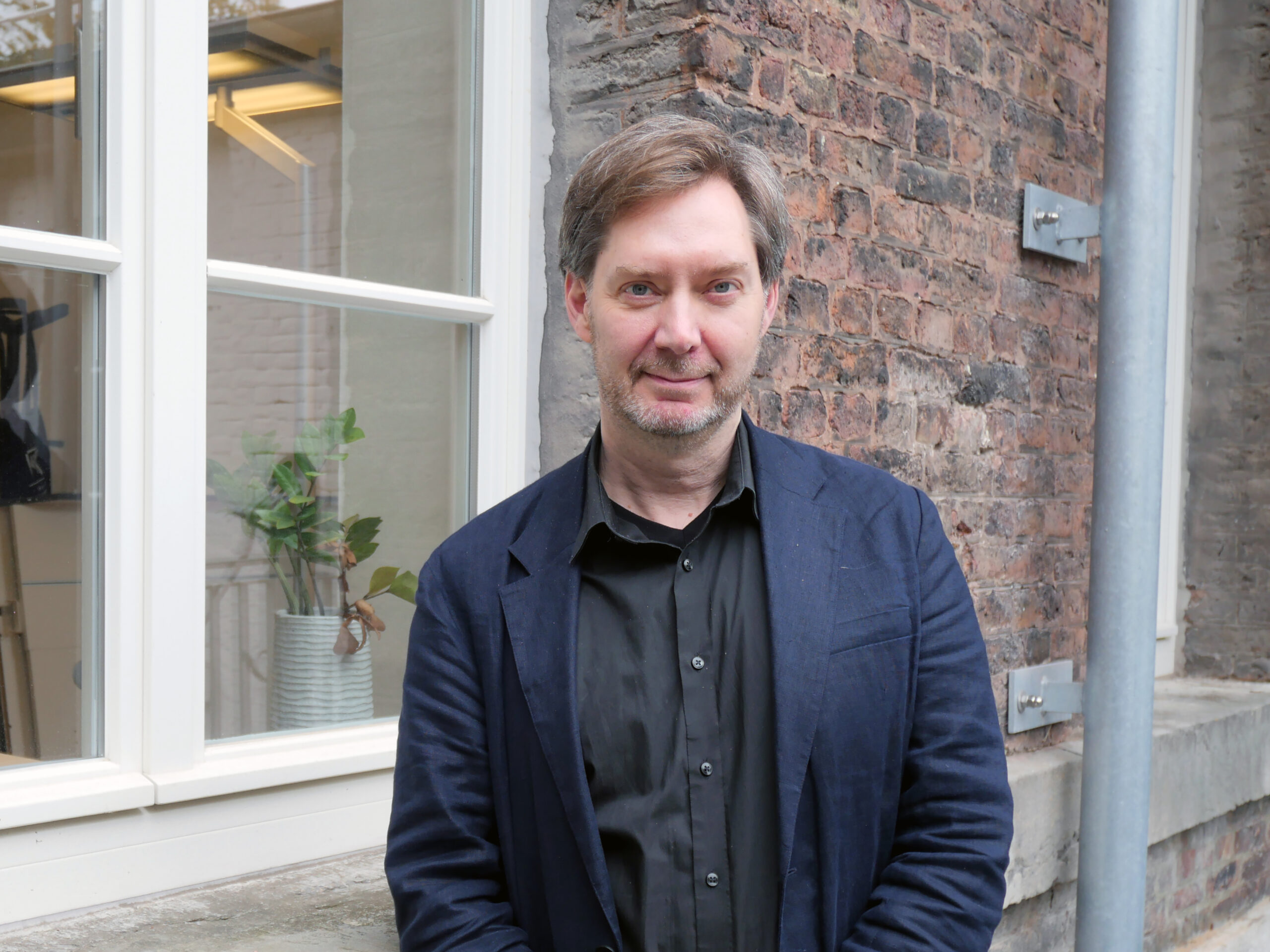
Bernd Bösel
c:o/re Fellow 04/25 – 03/26
Bernd Bösel is a philosopher and media scholar. His main area of research are the technical and digital operationalization of affect and emotions, as well as media theory and philosophy of technology.
Münsterberg had been offered a chair for psychology at Harvard University by none other than William James, one of the founders of psychology as an academic discipline, in the 1890s and subsequently established himself as the leading psychology professor of his generation. Due to the many books he published in English as well as his native German, he exerted an enormous influence on his discipline on either side of the Atlantic. In his textbooks Psychology – General and Applied and Grundzüge der Psychotechnik, both published in 1914, he outlined a grand vision for applying psychotechnics to literally every field of cultural activity, including law, science, pedagogy, arts, economy, the health sector and even policing. While conducting a plethora of psychological experiments in his laboratory at Harvard, he also collaborated with industrial companies and investigated the effects of work environments on attention and fatigue. Münsterberg conceived industrial psychology as a branch of psychotechnics that would eventually elevate Frederick Taylor’s Scientific Management to a truly scientific level.
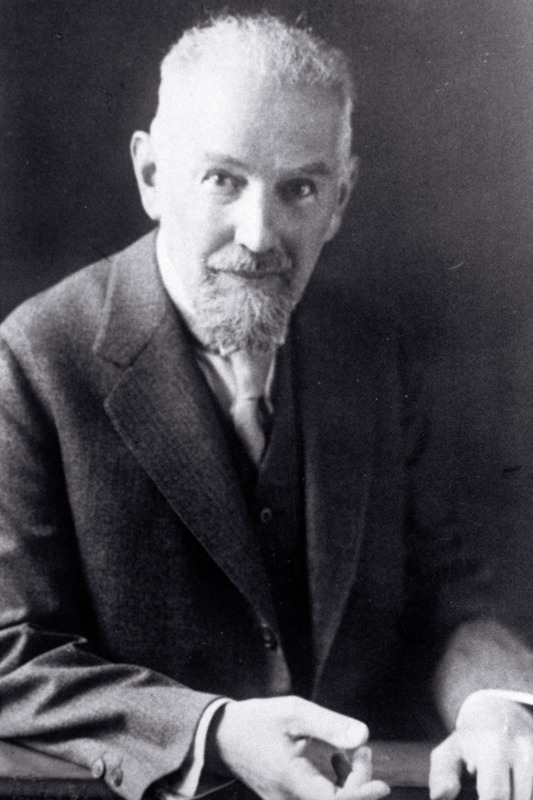
During World War I, the employment of psychotechnical testing procedures proved fruitful, especially for the operation of new machinery like the aeroplane or the streetcar, but also sophisticated industrial devices for which best practices had yet to be established. This was the birthplace of »industrial psychotechnics« which became an international success in the 1920s, during which a number of institutes and journals for psychotechnics were founded. The »International Association of Psychotechnics« organized eight conferences between 1920 and 1934. However, in the early 1930s psychotechnics was already in a deep and long-lasting crisis that had started with the Great Crash of 1929. But there were not just economic, but also political reasons for the demise of industrial psychotechnics. In Nazi Germany, the persecution of what was defined as »Jewish« scientists led to a weakening of psychotechnical research (William Stern was dismissed from his chair in Hamburg and soon after fled to the US, while two of his assistants committed suicide). In the USSR, following a decade of wide-ranging experimentation that combined psychotechnics with architecture, film, and human physiology, the Stalinist purges effectively ended all of these activities.
After World War II had ended, the International Association of Psychotechnics reconvened in 1949 in Bern. The demand for applied psychology soon skyrocketed due to the mental health crisis caused by the devastations of the war. In 1955, the Association renamed itself to »International Association of Applied Psychology«, thus erasing the term »psychotechnics« from its self-description. This has led historians of psychology to the conclusion that psychotechnics was discontinued and had become a thing of the past. But what if we question this conclusion and rather focus on the continuities in the way that applied psychology, as an academic discipline, seeks to improve its understanding of psychological processes, and to ultimately develop optimal methods of influencing the human mind? It could be argued that the success story of applied psychology in the second half of the 20th century, with its branching out into ever more specialized subfields (e. g. behavioral economics, sport psychology, or environmental psychology), equals the realization of Hugo Münsterberg’s aim to bring psychotechnics to every aspect of human life and culture.
In regard to our contemporary digital lifeworld, there is an even greater urgency to reactivate the semantics of »psychotechnics«. Scholars working in the field of media studies and philosophy of technology have proposed the term »psychotechnology« as a label for media and information technologies altogether. The reason is that these technologies, just by the way of their functioning, captivate our attention and influence our affective lives. Digital gadgets also increasingly organize our memory, our imaginations as well as our wishes and desires. These technological developments are coincidental with the global rise of applied psychology for a good reason. As a matter of fact, psychology and computation have been converging for a long time, as the history of cybernetics shows.
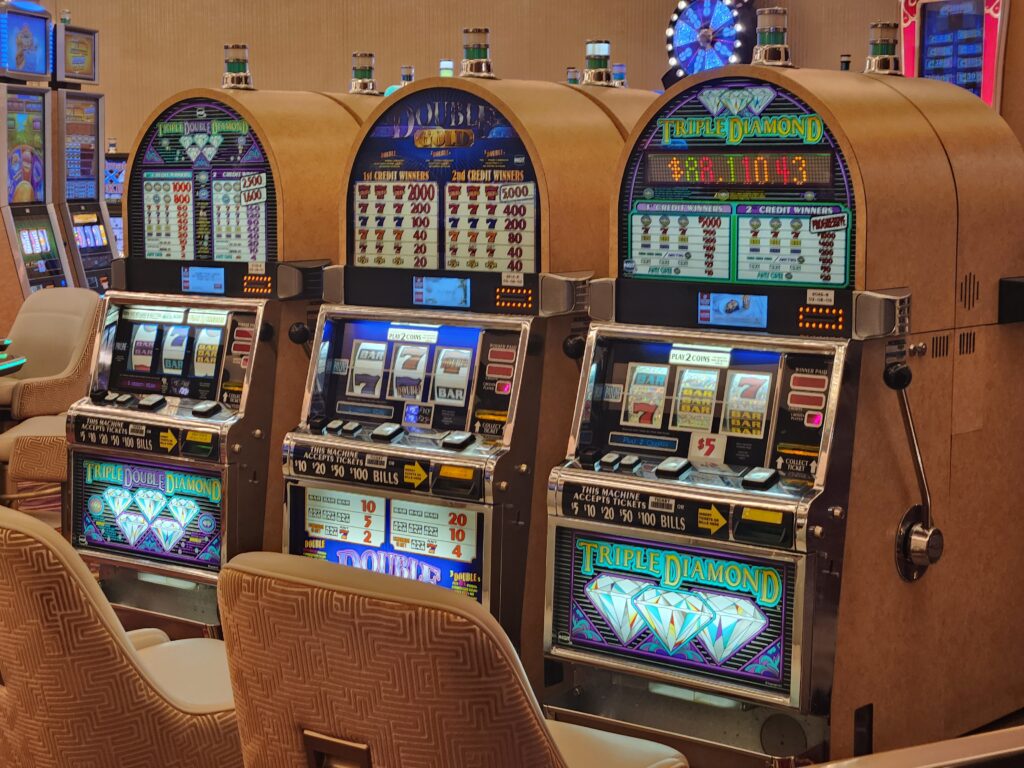
Today, Big Tech companies employ psychologists to get a better understanding of how their customers think and feel and how to make them »addicted by design«. Scraping personal data assists in the goal of micro-targeting individual users. What has critically been described as surveillance capitalism, data capitalism or just digital capitalism thus operates on a psychotechnological basis. It has yet to be determined how many of these developments can be traced back to the early conceptions of psychotechnics outlined by Stern, Münsterberg and their colleagues. In any case, instead of upholding the idea that psychotechnics is a thing of the past, we should engage with its surprising afterlife. Through the increasing automation of measuring and operating psychic functions, what began as an expert-based psychotechnics is now more and more being accomplished by technical systems that are being constantly updated and expanded by companies that do not always adhere to ethical standards. Therefore, we should come to a better understanding of the design principles and overall goals involved. A critical theory of
contemporary psychotechnologies will be an important cornerstone in our collective effort to save democracy and human dignity and freedom.
Lecture Series Winter 2025/26: Digital Complexity: Beyond Human Understanding
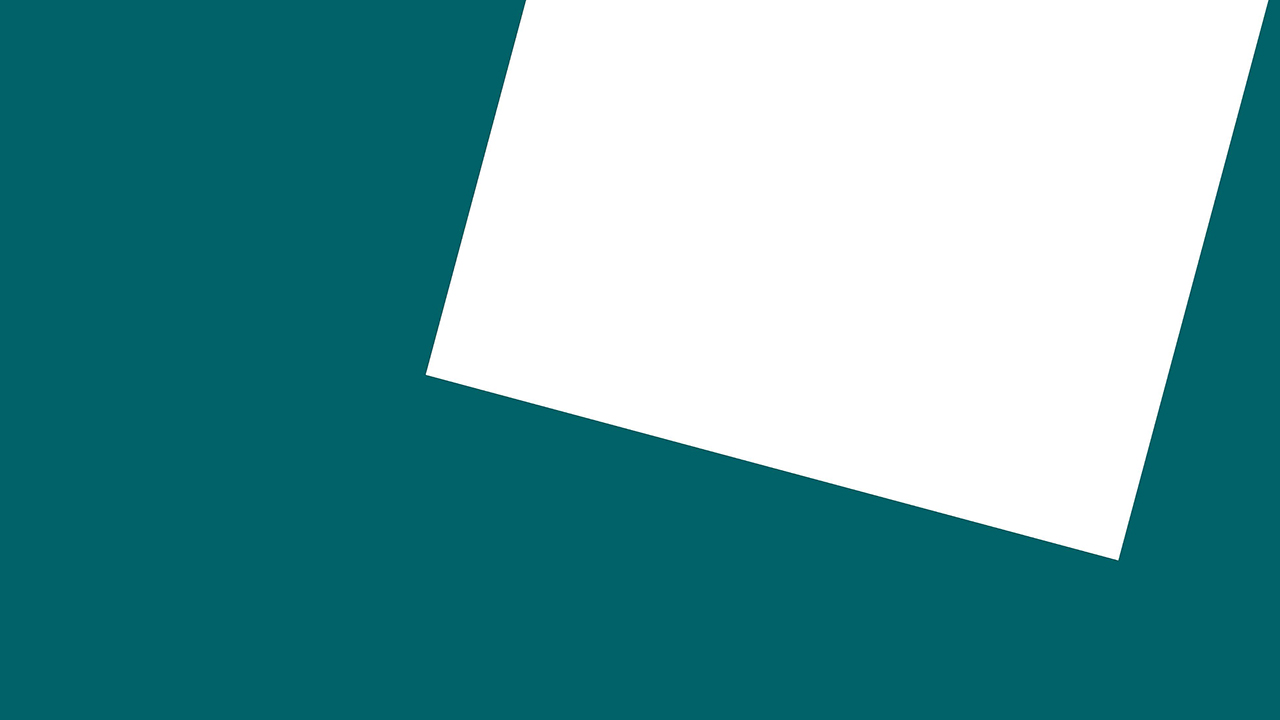
We are happy to announce that the lecture series of the winter term 2025/26 will revolve around the topic of Digital Complexity: Beyond Human Understanding.
Current developments in the fields of simulation and artificial intelligence have shown that the complexity of digital tools has exceeded the levels of human understanding. We can no longer comprehend and explain the results that AI delivers. Even AI deceptions and hallucinations are now almost impossible to detect. This raises the question of the relationship between humans and their technology anew. Are technologies as instruments useful extensions of human capabilities, as it was understood in the classical philosophy of technology, or are we now extensions of technology? Will AI dominate us in the near future?
The lecture series addresses these fundamental questions as well as ethical issues of digital transformation. It also takes a look at the development of digitality as a modern paradigm. Even though digital computers first appeared in the 1940s, there is a longer-term history of the development of digital tools and methods deeply rooted in our self-understanding as humans. Knowledge of this history makes it easier to understand current developments.
But what exactly do these current developments mean for science and society? The different lectures aim to tackle various aspects of the digital transformation of science and society from the perspective of “digital complexity.” Questions about explainable AI, about the well-being of people in a digital world, about the social and political impact of digital, social media will be explored, as well as the provocative question of who will be doing research in the future: humans or AI?
Various speakers, including the media theorist Anna Tuschling and the sociologist Dirk Baecker, will be guests at the KHK c:o/re to shed light on “Digital Complexity: Beyond Human Understanding” from different disciplinary perspectives.
Please find an overview of the dates and speakers in the program.
The lectures will take place from October 22, 2025, to February 11, 2026, every second Wednesday from 5 to 6:30 pm in presence and online.
Part of the lecture series are three keynotes, held in the context of the 8th HaPoC Conference “History and Philosophy of Computing,” hosted by c:o/re in December 2025. The conference will examine the topic of “digital complexity” in greater detail.
If you would like to attend, please write a short email to events@khk.rwth-aachen.de.
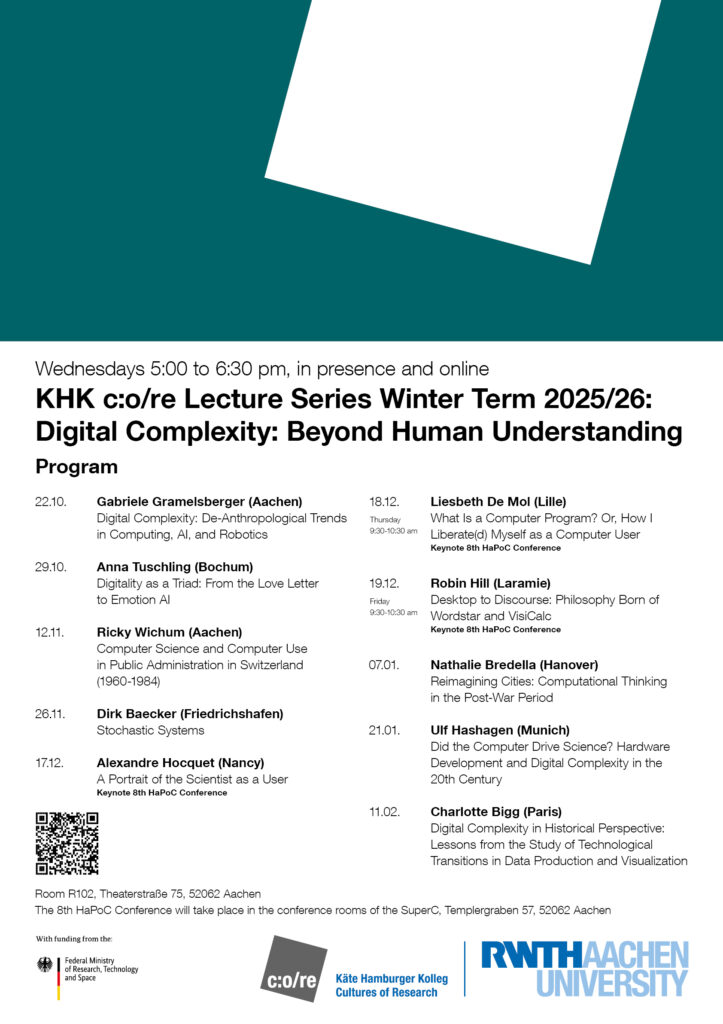
The Computer in Motion
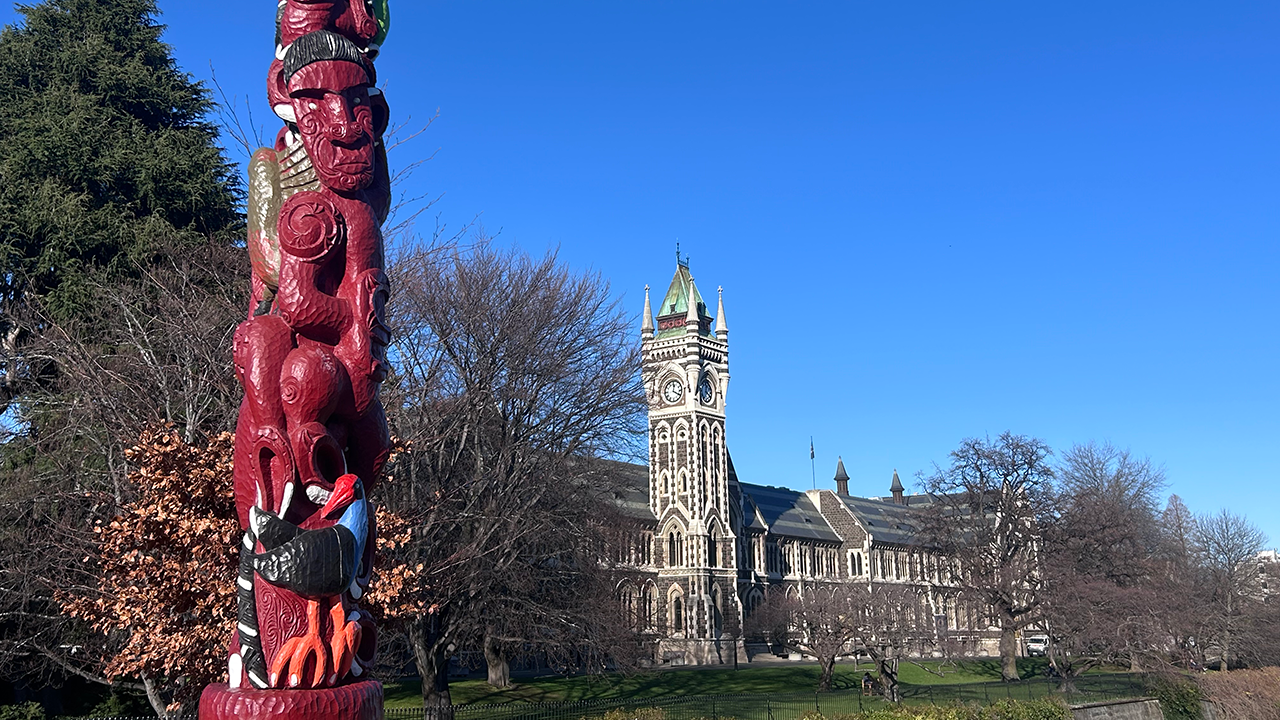
ARIANNA BORRELLI
The Symposium Computer in Motion critically questioned the notion of the computer as a “universal machine” by demonstrating how the computer adapted to and was appropriated in different milieus, cultures, communities and across borders. By historicising the movement of computer-related knowledge and artifacts, the presentations help us recover multiple sites of agency behind the idea of an unstoppable digital transformation driven by capitalist innovation. The event was organized by Barbara Hof (University of Lausanne) Ksenia Tatarchenko (John Hopkins University) and Arianna Borrelli (c:o/re RWTH Aachen) on behalf of the Division for History and Philosophy of Computing (HaPoC) in context of the 27th International Conference of History of Science and Technology, held at the University of Otago in Dunedin, New Zealand, and online from June 29 to July 5 2025.
The Symposium had an exceptional coverage of periods and cultures, showcased here as an example of the manifold thematic and methodological facets of the history of computing..
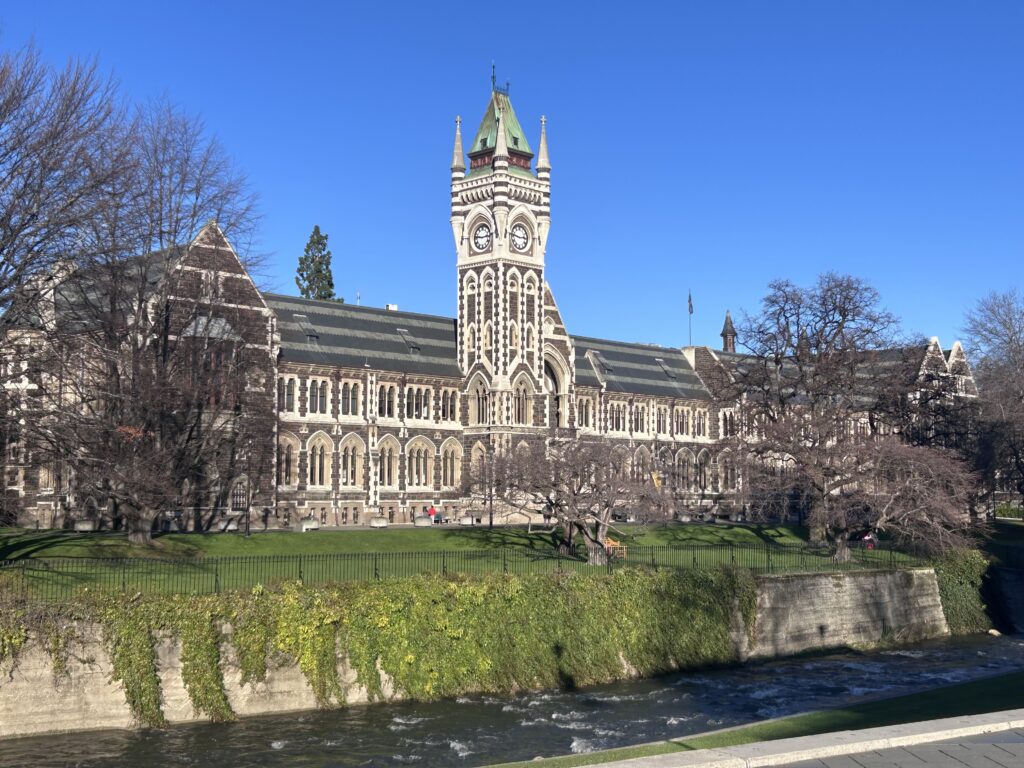
Decimal place-value notations prior to the 10th century: a material computer
Karine Chemla (School of Mathematics, University of Edinburgh, and researcher emerita CNRS)
This presentation argues that decimal place-value notations have been introduced as material tools of computation and that, until around the 10th century, they were used only as a material notation to compute, and were never shown in illustrations in mathematical writings, let alone used to express numbers. Furthermore, the presentation argues that the same remarks hold true whether we consider the earliest extant evidence for the use of such a numeration system in Chinese, Sanskrit, and Arabic sources. In all these geographical areas, decimal place-value numeration systems were first used as a material notation. These remarks suggest that, as a tool of computation, decimal place-value numeration systems have circulated in the context of a material practice, despite changes in the graphics for the digits, and changes in the materiality of the computation.
Smuggling Vaxes: or how my computer equipment was detained at the border
Camille Paloque-Bergès (Laboratoire HT2S, Conservatoire National des Arts et Métiers)
Between 1980 and 1984, the global computer market was heavily influenced by rising DEFCON levels and industrial espionage, alongside the imposition of restrictions on US computer equipment exports (Leslie, 2018). One notable example was the VAX mini-computer from DEC, which became subject to the COCOM doctrine, restricting its distribution due to its strategic importance. Popular in research communities, the VAX supported the Unix operating system and played a pivotal role in the development of Arpanet and the UUCP networks, both precursors to the modern Internet. Despite restrictions, the VAX was widely imported through workarounds or cloning techniques. This paradox of open-source R&D efforts occurring within a politically closed environment (Russell, 2013; Edwards, 1996) is illustrated by the infamous “Kremvax” joke on Usenet, which falsely claimed the USSR had joined the Internet. The study of the VAX’s role in both Eastern and Western Europe highlights the tension between technological openness and Cold War-era containment policies. These technical and administrative maneuvers, though trivial to the broader public, were crucial for the diffusion and cultural adoption of early data networks at the level of the system administrator working in a computer center eager to become a network node.
A Thermal History of Computing
Ranjodh Singh Dhaliwal (University of Basel) ranjodhdhaliwal.com
If you open a computer today, the biggest chunk of real estate, curiously, is not taken by processors, memories, or circuit boards but by increasingly complex heat sinks. Starting from this observation that all technology today needs extensive heat management systems, this piece theorizes the historical and conceptual dimensions of heat as it relates to computing. Using case studies from the history of computation–including air conditioning of the early mainframe computers running weather simulations (such as ENIAC in IAS in the 1960s) and early Apple machines that refused to run for long (because Steve Jobs, it is said, hated fans)–and history of information–the outsized role of thermodynamics in theorizing information, for example–I argue that computation, in both its hardware and software modalities, must be understood not as a process that produces heat as a byproduct but instead as an emergent phenomenon from the heat production unleashed by industrial capitalism.
Put another way, this talk narrates the story of computation through its thermal history. By tracing the roots of architectural ventilation, air conditioning of mainframes and computer rooms in the 20th century, and thermodynamics’ conceptual role in the history of information and software, it outlines how and why fans became, by volume, the biggest part of our computational infrastructures. What epistemological work is done by the centrality of heat in these stories of computation, for example, and how might we reckon with the ubiquitization of thermal technologies of computing in this age of global climate crises?
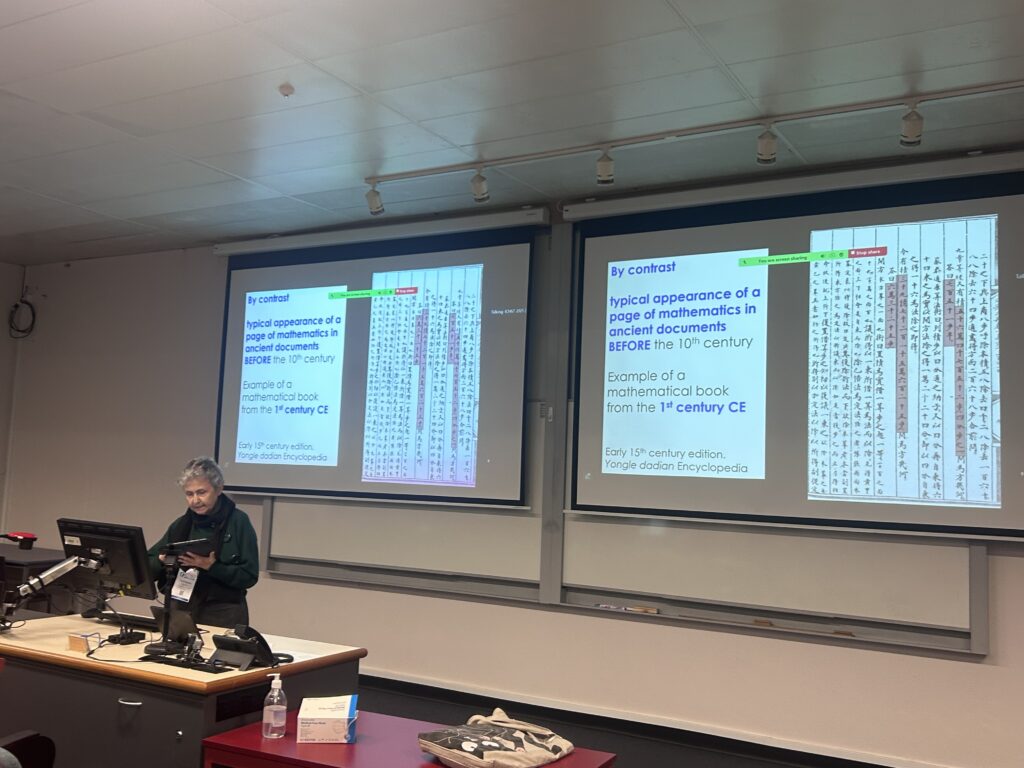
Supercomputing between science, politics and market
Arianna Borrelli (Käte-Hamburger-Kolleg “Cultures of Research” RWTH Aachen)
Since the 1950s the term “supercomputer” has been used informally to indicate machines felt to have particularly high speed or large data-handling capability. Yet it was only in the 1980s that systematic talk of supercomputers and supercomputing became widespread, when a growing number of supercomputing centers were established in industrialized countries to provide computing power mainly, but not only, for fundamental and applied research. Funding for creating these institutes came from the state. Although arguably at first these machines could be of use only in a few computationally-intensive fields like aerodynamics or the construction of nuclear power plants, sources suggest that there were also scientists from other areas, especially physicists, who promoted the initiative because they regarded increasing computing power as essential for bringing forward their own research. Some of them also had already established contacts with computer manufacturers. In my paper I will discuss and broadly contextualize some of these statements, which in the 1990s developed into a wide-spread rhetoric of a “computer revolution” in the sciences.
Neurons on Paper: Writing as Intelligence before Deep Learning
David Dunning (Smithsonian National Museum of American History)
In their watershed 1943 paper “A Logical Calculus of the Ideas Immanent in Nervous Activity,” Warren McCulloch and Walter Pitts proposed an artificial neural network based on an abstract model of the neuron. They represented their networks in a symbolism drawn from mathematical logic. They also developed a novel diagrammatic system, which became known as “McCulloch–Pitts neuron notation,” depicting neurons as arrowheads. These inscriptive systems allowed McCulloch and Pitts to imagine artificial neural networks and treat them as mathematical objects. In this manner, they argued, “for any logical expression satisfying certain conditions, one can find a net behaving in the fashion it describes.” Abstract neural networks were born as paper tools, constituting a system for writing logical propositions.
Attending to the written materiality of early neural network techniques affords new historical perspective on the notoriously opaque technology driving contemporary AI. I situate McCulloch and Pitts in a material history of logic understood as a set of practices for representing idealized reason with marks on paper. This tradition was shot through with anxiety around the imperfection of human-crafted symbolic systems, often from constraints as mundane as “typographical necessity.” Like the authors they admired, McCulloch and Pitts had to compromise on their notation, forgoing preferred conventions in favor of more easily typeset alternatives. Neural networks’ origin as inscriptive tools offers a window on a moment before the closure of a potent black box, one that is now shaping our uncertain future through ever more powerful, ever more capitalized deep learning systems.
Knowledge Transfer in the Early European Computer Industry
Elisabetta Mori (Universitat Pompeu Fabra, Barcelona)
The collaboration with an academic mathematical laboratory or research institute is a recurring pattern in the genesis of early computer manufacturers: it typically involved financial support and exchanges of patents, ideas and employees.
In my presentation I show how knowledge transfer between academic laboratories and private corporations followed different strategies and was shaped by the contingent policies and contexts in which they unfolded. The presentation focuses on three different case studies: the partnership between the Cambridge Mathematical Laboratory and Lyons, begun in 1947; the example of the Mathematisch Centrum in Amsterdam and its 1956 spin-off NV Electrologica; and the case of the Matematikmaskinnämnden and Facit, the Swedish manufacturer of mechanical calculators, which entered the computer business in 1956.
The three case studies are representative of three distinct patterns. First, knowledge transfer by a sponsorship agreement. Funding and supporting the construction of the EDSAC computer enabled the Lyons catering company (a leader in business methods) to appropriate its design to manufacture its LEO Computers. Second, knowledge transfer through a spin-off. Electrologica (the Netherland’s first computer manufacturer) was established by computer scientists of the Mathematisch Centrum as a spin-off to commercialize the computers designed by the institute. Third, the recruitment of technical staff from a center of excellence. Facit entered the computer business by hiring most of its technicians and researchers from Matematikmaskinnämnden (the research organization of the Swedish government). Taken together the three case studies cast light on how R&D diffused in the embryonic computer industry in post-war Europe.
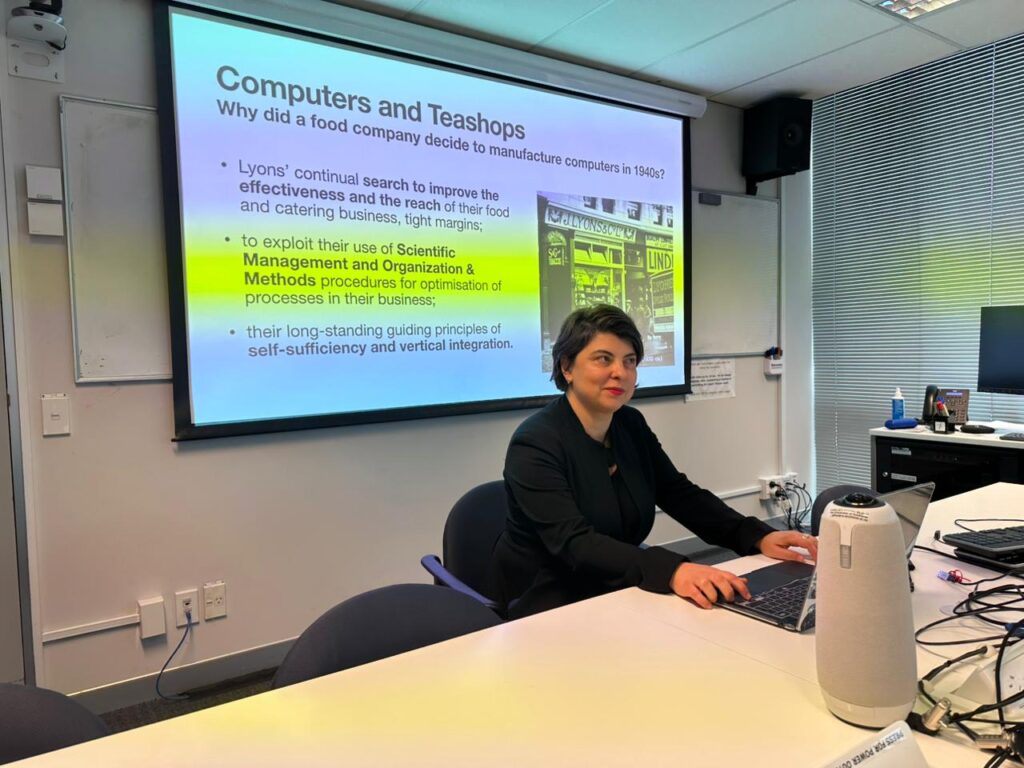
A commission and its nationalist technicians: expertise and activities in the Brazilian IT field in the 1970s
Marcelo Vianna (Federal Institute of Education Science and Technology of Rio Grande do Sul)
The history of Brazilian IT in the 1970s is influenced by the work of a group of specialists who occupied spaces in university and technocratic circles to propagate ideas of technological autonomy from the Global North. In this sense, there is a consensus that an elite of this group, acting in the Commission for the Coordination of Electronic Processing Activities (CAPRE), managed to establish a national Informatics policy, giving rise to an indigenous computer industry at the end of the decade. However, there is still much to be explored about the dynamics surrounding CAPRE’s different activities and the profile of its “ordinary” technicians, considering the breadth of attributions that the small body assumed in structuring the Brazilian IT field. Our proposal is to map them by combining prosopography and identifying the concepts, cultures and practices that guided its actions, such as the ideas of “rationalization” and “technological nationalism” and the establishment of a technopolitical network with the technical-scientific community of the period, including the first political class associations in the field of Computer Science. The paper will discuss the composition of the group and its expertise and trajectories, as well as the main actions of the technicians aimed at subsidizing CAPRE’s decision-makers. In this sense, the considerable degree of cohesion between technicians and its leaders ensured that an autonomous path was established for Informatics in the country, even though they were exposed to the authoritarian context of the period, which led to CAPRE itself being extinguished in 1979.
People of the Machine: Seduction and Suspicion in U.S. Cold War Political Computing
Joy Rohde (University of Michigan)
The computational social scientific projects of the Cold War United States are known for their technocratic and militarized aspirations to political command and control. Between the 1960s and the 1980s, Defense officials built systems that sought to replace cognitively limited humans with intelligent machines that claimed to predict political futures. Less familiar are projects that sought to challenge militarized logics of command and control. This paper shares the story of CASCON (Computer-Aided System for Handling Information on Local Conflicts), a State Department-funded information management system that mobilized the qualitative, experiential knowledge and political acumen of diplomats to challenge U.S. Cold War logics, like arms trafficking and unilateral interventionism. The system’s target users—analysts in the Arms Control and Disarmament Agency and the State Department tasked with monitoring conflicts in the global South—were notoriously skeptical of the Pentagon’s militarism and computational solutionism. Yet users ultimately rejected the system because it did tell them what to do! Despite their protestations, they had internalized the command and control logics of policy computing.
CASCON was an early effort to design around the contradictions produced by coexisting fears of human cognitive and information processing limits, on the one hand, and of ceding human agency and expertise to machines on the other. I conclude by arguing that CASCON reflects the simultaneous seduction and fear of the quest to depoliticize politics through technology—an ambivalence that marks contemporary computing systems and discourse as well.
AI in Nomadic Motion: A Historical Sociology of the Interplay between AI Winters and AI Effects
Vassilis Galanos (University of Stirling)
Two of the most puzzling concepts in the history of artificial intelligence (AI), namely the AI winter and the AI effect are mutually exclusive if considered in tandem. AI winters refer to the phenomenon of loss in trust in AI systems due to underdelivery of promises, leading to further stagnation in research funding and commercial absorption. The AI effect suggests that AI’s successful applications have historically separated themselves from the AI field by the establishment of new/specialised scientific or commercial nomenclature and research cultures. How do AI scientists rebrand AI after general disillusionment in their field and how do broader computer science experts brand their research as “AI” during periods of AI hype? How does AI continue to develop in periods of “winter” in different regions’ more pleasant climates? How do periods of AI summer contribute to future periods of internet hype during their dormancy? These questions are addressed drawing from empirical research into the historical sociology of AI, a 2023 secondary analysis between technological spillages and unexpected findings for internet and HCI research during periods of intense AI hype (and vice versa, AI advancements based on periods of internet/network technologies hype), as well as a 2024 oral history project on AI at Edinburgh university and the proceedings of the EurAI Workshop on the History of AI in Europe during which, several lesser known connections have been revealed. To theorise, I am extending Pickering/Deleuze and Guattari’s notion of nomadic science previously applied to the history of mathematics and cybernetics.
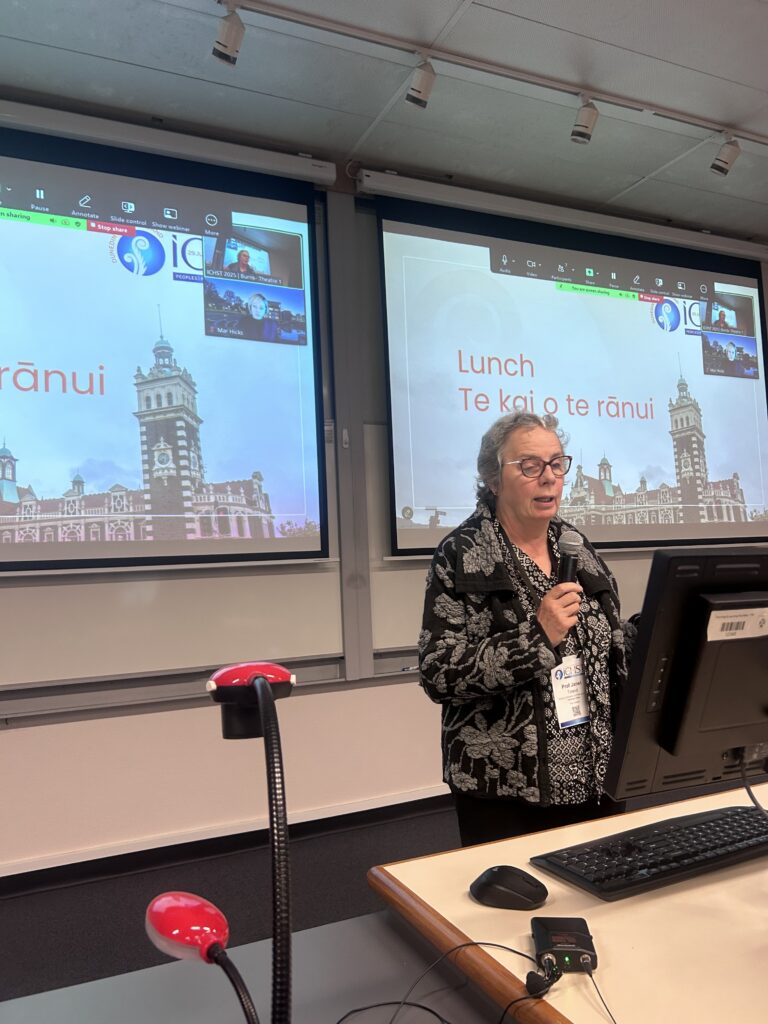
Vector and Raster Graphics : Two Pivotal Representation Technologies in the Early Days of Molecular Graphics
Alexandre Hocquet and Frédéric Wieber (Archives Poincaré, Université de Lorraine), Alin Olteanu (Shanghai University), Phillip Roth (Käte-Hamburger-Kolleg “Cultures of Research” RWTH Aachen)
https://poincare.univ-lorraine.fr/fr/membre-titulaire/alexandre-hocquet
Our talk investigates two early computer technologies for graphically representing molecules – the vector and the raster display – and traces their technical, material, and epistemic specificity for computational chemistry, through the nascent field of molecular graphics in the 1970s and 1980s. The main thesis is that both technologies, beyond an evolution of computer graphics from vector to raster displays, represent two modes of representing molecules with their own affordances and limitations for chemical research. Drawing on studies in the media archaeology of computer graphics and in history of science as well as primary sources, we argue that these two modes of representing molecules on the screen need to be explained through the underlying technical objects that structure them, in conjunction with the specific traditions molecular modeling stems from, the epistemic issues at stake in the involved scientific communities, the techno-scientific promises bundled with them, and the economic and industrial landsape in which they are embedded.
Erring Humans, Learning Machines: Translation and (Mis)Communication in Soviet Cybernetics and AI
Ksenia Tatarchenko (John Hopkins University)
This paper centers on translation in Soviet cybernetics and AI. Focusing on cultural practices of translation and popularization as reflected in widely-read scientific and fictional texts, I interrogate practices of interpretation in relation to the professional virtue of scientific veracity as well as its didactic function in the Soviet cybernetic imaginary throughout the long Thaw. The publication of the works of Norbert Wiener, Alan Turing, and John von Neumann in Russian was not simply aimed at enabling direct access to the words and thoughts of major bourgeois thinkers concerned with automation and digital technologies: translating and popularizing cybernetics in the post-Stalinist context was about establishing new norms for public disagreement. No longer limited to the opposition of true and false positions, the debates around questions such as “Can a machine think?” that raged across a wide spectrum of Soviet media from the late 1950s to the 1980s were framed by an open-ended binate of what is meaningful or, on the contrary, meaningless. In his classic 1992 book The Human Motor: Energy, Fatigue, and the Origins of Modernity, Anson Rabinbach demonstrates how the utopian obsession with energy and fatigue shaped social thought in modern Europe. In a similar line, this project explores how human error takes on a new meaning when the ontology of information central to Western cybernetics is adopted to a Soviet version of digital modernity.
Tech Disruptors, Then and Now
Mar Hicks (University of Virginia)
This paper explores the connected histories of whistleblowers and activists who worked in computing from the 1960s through the present day, showing how their concerns were animated by similar issues, including labor rights, antiracism, fighting against gender discrimination, and concerns regarding computing’s role in the military-industrial complex. It looks at people who tried to fight the (computer’s) power from within the computing industry, in order to write an alternative history of computing.

Nosebleed Techno, Sound Jams and Midi Files: the Creative Revolution of Australian Musicians in the 1990s through AMIGA Music Production.
Atosha McCaw (Swinburne University of Technology, Melbourne)
This paper looks at the innovative use of the AMIGA computer by Australian musicians in the 1990s, highlighting its role as a cost-effective tool for music production, experimentation, and collaboration. By examining how these artists harnessed the power of this technology to share files and rapidly materialize creative concepts, we uncover a fascinating chapter in the evolution of electronic music in Australia.
Computers and Datasets as Sites of Political Contestation in an Age of Rights Revolution: Rival Visions of Top-Down/Bottom-Up Political Action Through Data Processing in the 1960s and 1970s United States
Andrew Meade McGee (Smithsonian Air and Space Museum)
As both object and concept, the electronic digital computer featured prominently in discussions of societal change within the United States during the 1960s and 1970s. In an era of “rights revolution,” discourse on transformative technology paralleled anxiety about American society in upheaval. Ever in motion, shifting popular conceptualizations of the capabilities of computing drew comparisons to the revolutionary language of youth protest and the aspirations of advocacy groups seeking full political, economic, and social enfranchisement. The computer itself – as concept, as promise, as installed machine – became a contested “site of technopolitics” where political actors appropriated the language of systems analysis and extrapolated consequences of data processing for American social change. Computers might accelerate, or impede, social change.
This paper examines three paradigms of the computer as “a machine for change” that emerge from this period: 1) One group of political observers focused on data centralization, warning of “closed worlds” of institutional computing that might subject diverse populations to autocratic controls or stifle social mobility; 2) In contrast, a network of social activists and radicals (many affiliated with West Coast counterculture and Black Power movements) resisted top-down paradigms of data centralization and insisted community groups could seize levers of change by embracing their own forms of computing. 3) Finally, a third group of well-meaning liberals embraced the potential of systems analysis as a socially-transformative feedback loop – utilizing the very act of data processing itself to bridge state institutions and local people, sidestepping ideological, generational, or identity-based conflict.
Computing a Nation: Science-Technology Knowledge Networks, Experts, and the Shaping of the Korean Peninsula (1960-1980)
Ji Youn Hyun (University of Pennsylvania)
This paper presents a history of the ‘Systems Development Network’ (SDN), the first internet network in Asia established in 1982, developed in South Korea during the authoritarian presidency of Park Chung-Hee (1962-1979). I examine scientists and engineers who were repatriated under Park’s Economic Reform and National Reconstruction Plan to reverse South Korea’s ‘brain-drain’, re-employed under government sponsored research institutions, and leveraged to modernize state industrial manufacturing.
Pioneered by computer scientist Kilnam Chon, often lauded as ‘the father of East Asia’s internet’, a transnationally trained group of experts at the Korea Institute of Electronics Technology (KIET) developed the nation’s internet infrastructure, despite repeated government pushback and insistence on establishing a domestic computer manufacturing industry. Drawing on the Presidential Archive and National Archives of Korea, I describe how the SDN manifested through a lineage of reverse-engineering discarded Cheonggyecheon black market U.S. Military Base computer parts, prototyping international terminal and gateway connections, and “extending the instructional manual” of multiple microprocessors.
The reconfiguration of computer instructional sets are one of many cases of unorthodox, imaginative, and off-center methods practiced in Korea to measure up and compete with Western computing. Although repatriated scientists were given specific research objectives and goals, their projects fundamentally materialized through a series of experimental and heuristic processes. This paper will illuminate South Korea’s computing history, which until now has not been the subject of any history, and also allow a broader reflection on the transformation of East Asia during the Cold War––highlighting political change through the development of computing.
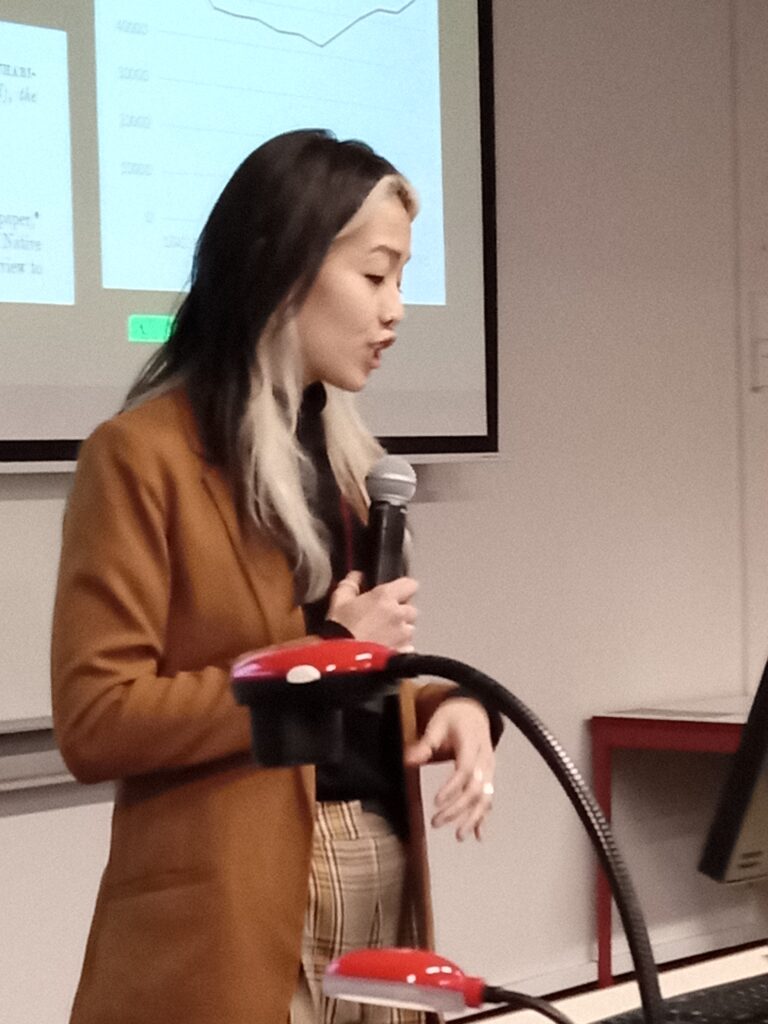
Collecting Data, Sharing Data, Modeling Data: From Adam and Eve to the World Wide Web within Twenty Years
Barbara Hof (University of Lausanne)
Much like physicists using simulations to model particle interactions, scientists in many fields, including the digital humanities, are today applying computational techniques to their analysis and research and to the study of large data sets. This paper is about the emergence of computer networks as the historical backbone of modern data sharing systems and the importance of data modeling in scientific research. By exploring the history of computer data production and use in physics from 1990 back to 1970, when the Adam & Eve scanning machines began to replace human scanners in data collection at CERN, this paper is as much about retelling the story of the invention of the Web at CERN as it is about some of the technical, social and political roots of today’s digital divide. Using archival material, it argues that the Web, developed and first used at physics research facilities in Western Europe and the United States, was the result of the growing infrastructure of physics research laboratories and the need for international access to and exchange of computer data. Revealing this development also brings to light early mechanisms of exclusion. They must be seen against the backdrop of the Cold War, more specifically the fear that valuable and expensive research data at CERN could be stolen by the Soviets, which influenced both the development and the restriction of data sharing.
Differing views of data in Aotearoa: the census and Māori data
Daphne Zhen Ling Boey and Janet Toland (Victoria University of Wellington | Te Herenga Waka)
This presentation explores differing concepts of “data” with respect to the Indigenous Māori people of Aotearoa and colonial settlers. A historical lens is used to tease out long-term power imbalances that still play out in the data landscape today. Though much data has been collected about Māori by successive governments of New Zealand, little benefit has come to Māori themselves.
This research investigates how colonisation impacted Māori, and the ongoing implications for data. The privileging of Western approaches to harnessing the power of data as opposed to indigenous ways stems from colonisation – a system that results in “a continuation of the processes and underlying belief systems of extraction, exploitation, accumulation and dispossession that have been visited on Indigenous populations.”
We examine the census, an important tool that provides an official count of the population together with detailed socioeconomic information at the community-level and highlight areas where there is a fundamental disconnect between the Crown and Māori. Does Statistics New Zealand, as a Crown agency, have the right to determine Māori ethnicity, potentially undermining the rights of Māori to self-identify? How do differing ways of being and meaning impact how we collect census data? How does Aotearoa commit to its Treaty obligations to Māori in the management and optimisation of census data? We also delve into Māori Data Sovereignty, and its aim to address these issues by ensuring that Māori have control over the collection, storage and use of their own data as both enabler of self-determination and decolonisation.
History of computing from the perspective of nomadic history. The case of the hiding machine
Liesbeth De Mol (CNRS, UMR 8163 Saviors, Textes, Langage, Université de Lille)
Computing as a topic is one that has moved historically and methodologically through a variety of disciplines and fields. What does this entail for its history? The aim of this talk is to provoke a discussion on the future of the history of computing. In particular, I use a notion of so-called nomadic history. This is in essence the idea to identify and overcome ones own disciplinary and epistemological obstacles by moving across a variety of and sometimes conflicting methods and fields. I apply the method to the case of the history of the computer-as-a-machine which is presented as a history of hide-and-seek. I argue that the dominant historical narrative in which the machine got steadily hidden away behind layers of abstraction needs countering both historically as well as epistemologically. It is based on a collaboratively written chapter for the forthcoming book “What is a computer program?”.
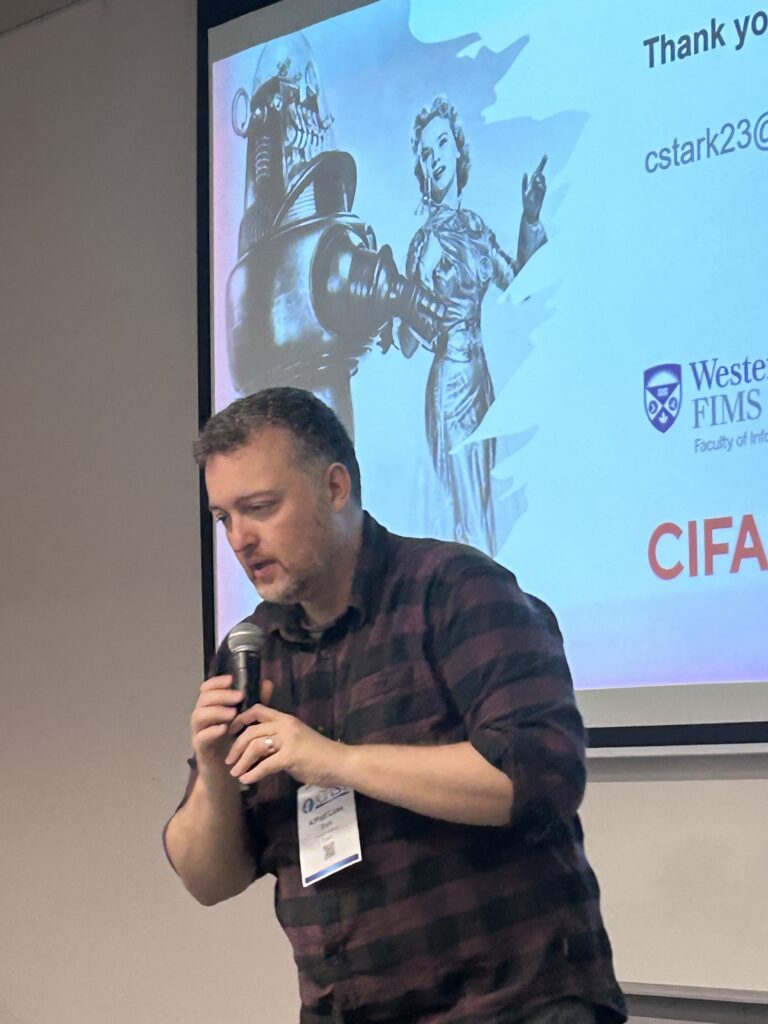
Modeling in history: using LLMs to automatically produce diagrammatic models synthesizing Piketty’s historiographical thesis on economic inequalities
Axel Matthey (University of Lausanne)
This research integrates theoretical digital history with economic history. Employing Large Language Models, we aim to automatically produce historiographical diagrams for analysis. Our experience with the manual production of historiographical diagrams suggests that LLMs might be useful to support the automatic generation of such historiographical diagrams which aim at facilitating the visualization and understanding of complex historical narratives and causal relationships between historical variables. Our initial exploration involved using Google’s LLM (Gemini 1.5 Pro) and OpenAI’s GPT-4o to convert a concise historical article by Piketty into a simplified causal diagram. This article is A Historical Approach to Property, Inequality and Debt: Reflections on Capital in the 21st Century . LLMs have demonstrated remarkable capabilities in various domains, including understanding and generating code, translating languages, and even creating different creative text formats. We show that LLMs can be trained to analyze historical texts, identify causal relationships between concepts, and automatically generate corresponding diagrammatic models. This could significantly enhance our ability to visualize and comprehend complex historical narratives, making implicit connections explicit, and facilitating further exploration and analysis. Historiographical theories explore the nature of historical inquiry, focusing on how historians represent and interpret the past: in this research, the use of diagrams is being considered as a means to enhance the communication, visualization, and understanding of these complex theories.
Computational Illegalism
Luke Stark (Western University Canada)
In his analysis of the concept in his lectures on the development of the “punitive society,” Michel Foucault describes the eighteenth century as a period of “systematic illegalism,” including both lower-class or popular illegalism and “the illegalism of the privileged, who evade the law through status, tolerance, and exception” (Foucault 2015, 142). In this paper, I argue that illegalism has new utility as an analytic concept in the history of computing. Illegalism is a characteristic of both the business models and rhetorical positioning of many contemporary digital media firms. Indeed, such “computational illegalism” is so rife that commentators often seem to accept it as a necessary aspect of Silicon Valley innovation.
In this presentation, I describe illegalism as theorized by Foucault and others and develop a theory of platform illegalism grounded in the history of technical and business models for networked computing since the 1970s. This presentation is part of a larger project in which I document the prevalence of illegalism on the part of digital platforms in various arenas, focusing in particular on platform labor and generative AI; examine the range of responses to such illegalism from consumers, activists, and governments; and formulate recommendations regarding ways to account for platform illegalism in scholarly and activist responses as part of governance mechanisms for digitally mediated societies.
The datafied “enemy,” Computational work, and Japanese American incarceration during World War II
Clare Kim (University of Illinois Chicago)
Following the events of Pearl Harbor in December 1941, a series of U.S. presidential proclamations and executive orders authorized the legal designation and treatment of people of Japanese ancestry as “enemy aliens.” The designation of the US West Coast as military zones under Executive Order 9066 enabled the removal and subsequent incarceration of more than 120,000 Japanese Americans in internment camps. The problem of identifying, incarcerating, and managing Japanese enemy alien populations necessitated the treatment of these military zones and spaces as information environments, where the classification of Japanese and Japanese American residents as enemy alien, citizen, or an alternative subject position could be adjudicated. This paper explores how conflict in the Pacific theater of World War II contoured the entanglements between computational work and Asian and Asian Americans residing in the U.S., recounting the setup of statistical laboratories established to track and manage Japanese American incarceration. It reveals how datafication practices were collapsed and equated with bodies that were racialized as an enemy alien and yellow peril, which paradoxically effaced other subject positions to which Japanese Americans came to occupy at the time: in particular, the invisible labor to which they furnished to statistical work as technical experts themselves.
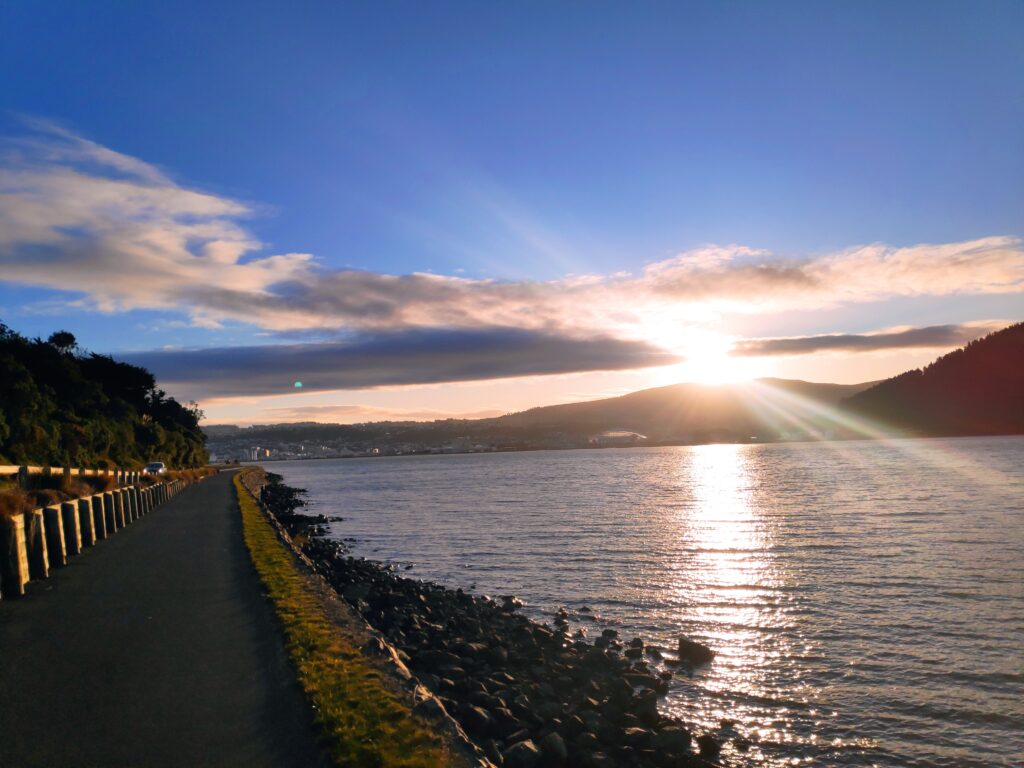
Fellow Publication: Integrative Contemporary Art and Science Practices Building Catalytic Structures
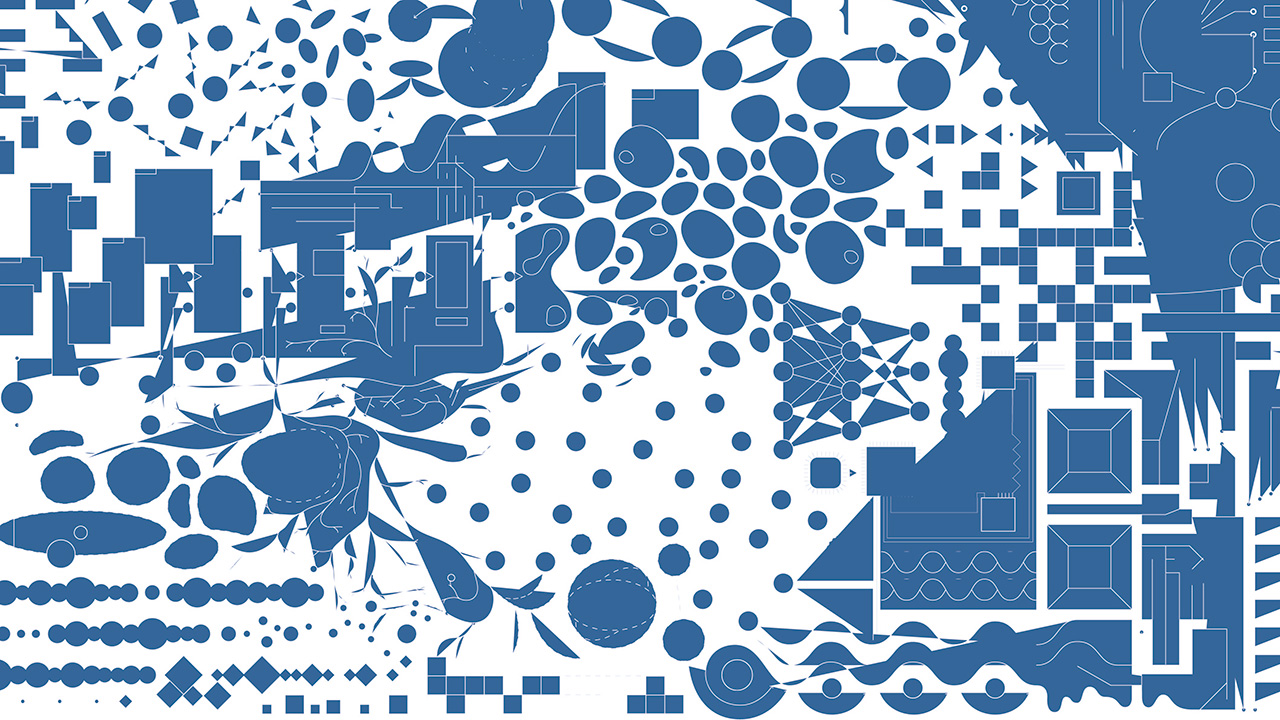
KHK c:o/re Fellow Hannah Star Rogers contributes to Integrative Contemporary Art and Science Practices Building Catalytic Structures, a newly released volume, edited by J.D. Talasek and Barbara Stauffer, and published by Routledge.
Contemporary Art and Science Practices: Building Catalytic Structures (2025) considers how such interdisciplinary efforts have shifted from outsider experiments to increasingly institutionalized initiatives. It examines the motivations, challenges, and transformative potential of this integration across public engagement, education, and cultural discourse. This groundbreaking collection brings together leading thinkers and practitioners to examine the evolving relationship between contemporary art and scientific inquiry. In addition to Rogers, the text features contributions from other leading voices in art and science, including William L. Fox, Ellen Levy, Mel Chin, Brandon and Aurore Ballengée, and Jill Scott. This volume is a vital resource for researchers, educators, curators, artists, scientists, and policy makers navigating the complex intersections of knowledge, creativity, and collaboration.
Rogers’ chapter, “Art, Science and Technology Studies: Charting Collaborative Practice,” offers a compelling analysis of the power dynamics, collaborative models, and institutional conditions shaping art-science partnerships today. Rogers’ work contributes a critical theoretical framework from Art, Science, and Technology Studies (ASTS), a subfield of Science and Technology Studies (STS), to advocate for more symmetrical, equitable modes of interdisciplinary collaboration.
Rogers argues for understanding both art and science as socially and culturally situated systems of knowledge. Drawing on examples ranging from historical botanical illustration to contemporary biotech art and artist residencies, she categorizes four prevalent models of collaboration, each with distinct power structures, intentions, and outcomes. She critiques the persistent instrumentalization of art – particularly in science communication – where artistic practice is often reduced to a tool for enhancing scientific messages. Her chapter provides a roadmap for critically evaluating and fostering more generative, balanced partnerships between artists and scientists.
About the Editors:
J.D. Talasek is a curator, researcher, and writer known for integrating the arts into scientific contexts through his leadership at the National Academy of Sciences and as editor-in-chief of Leonardo Journal.
Barbara Stauffer, a ceramic artist and former program director at the Smithsonian’s National Museum of Natural History, has led numerous interdisciplinary initiatives focused on public engagement and education.

